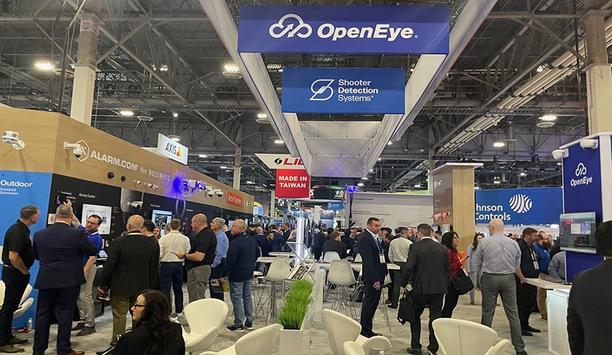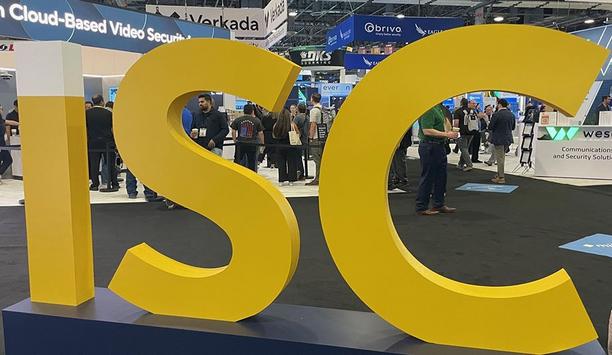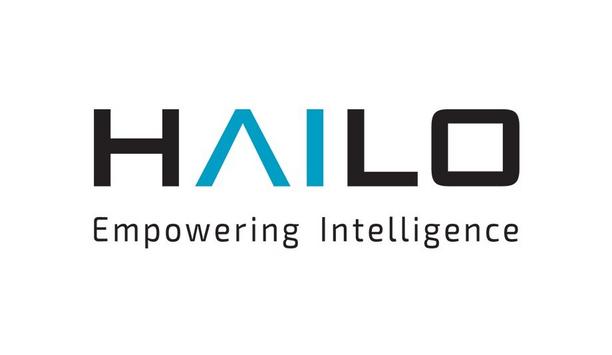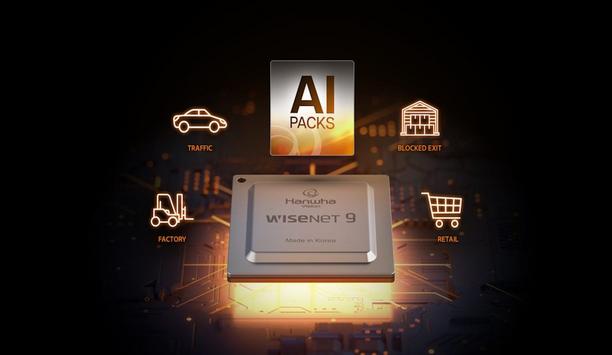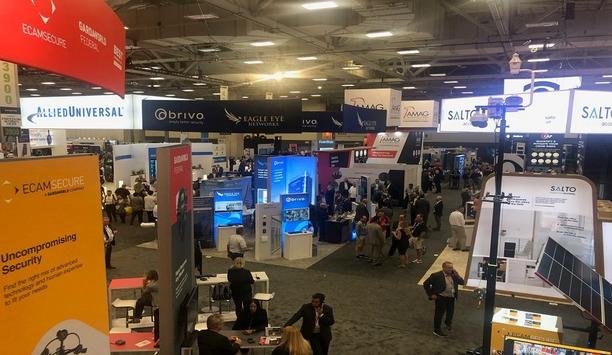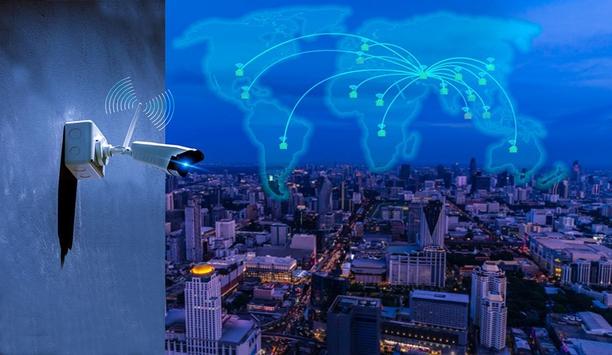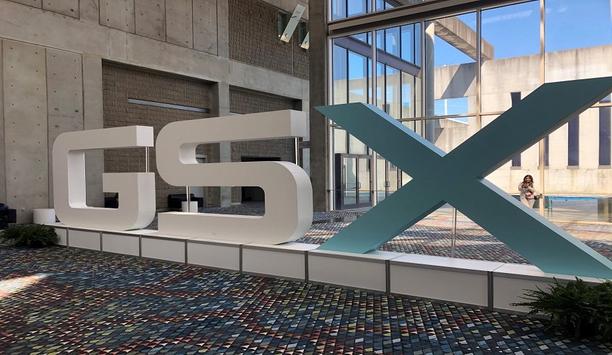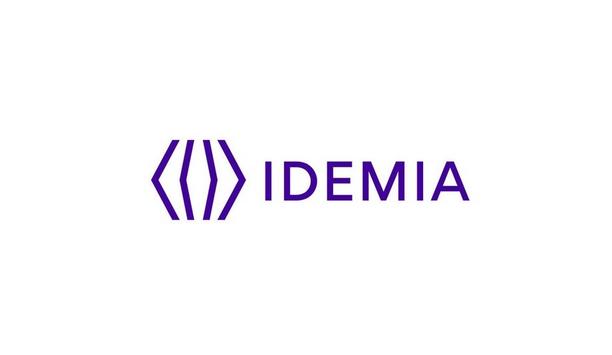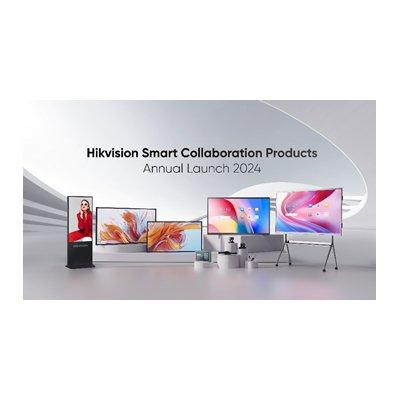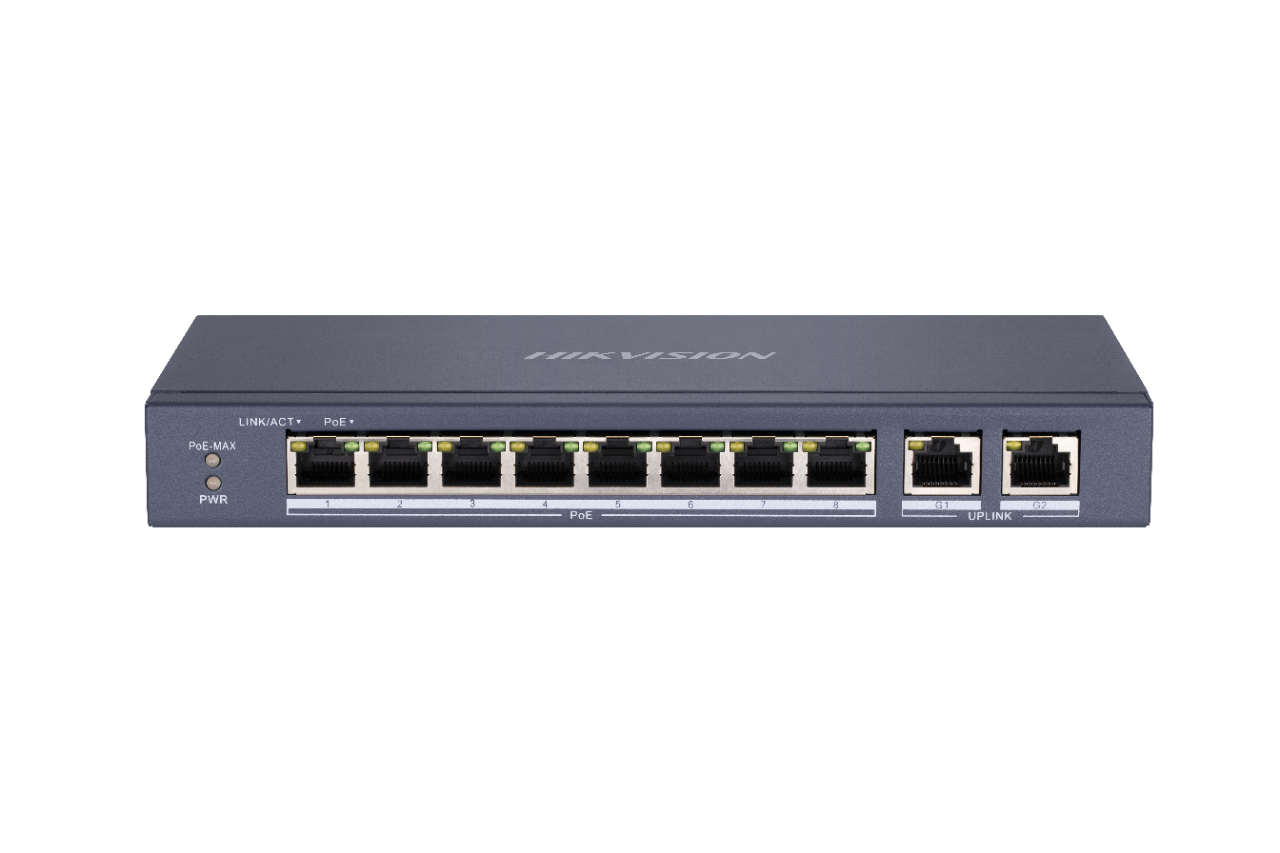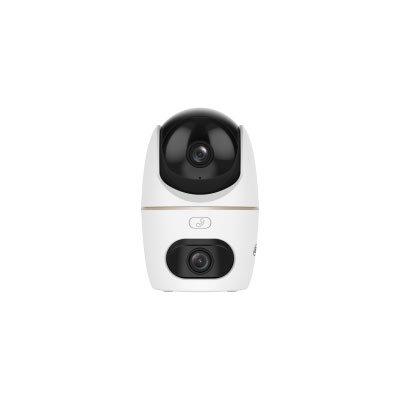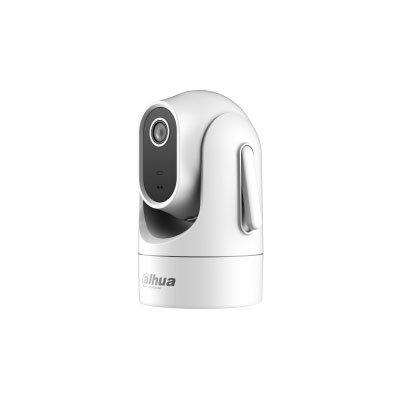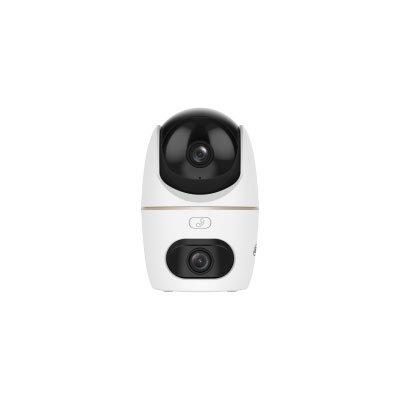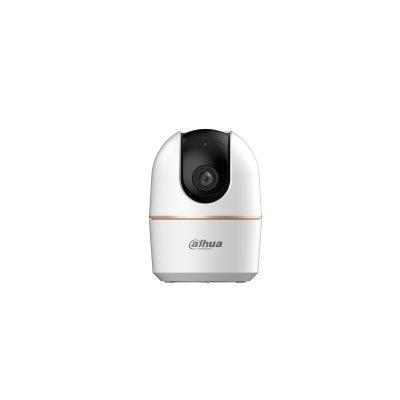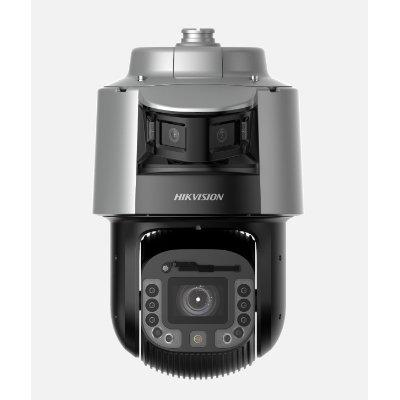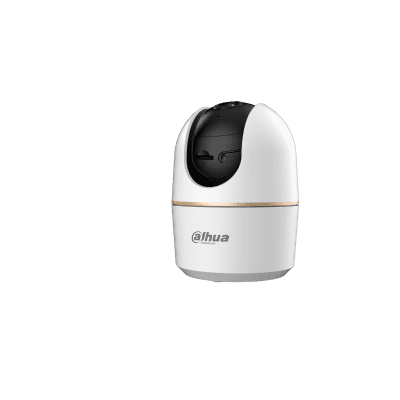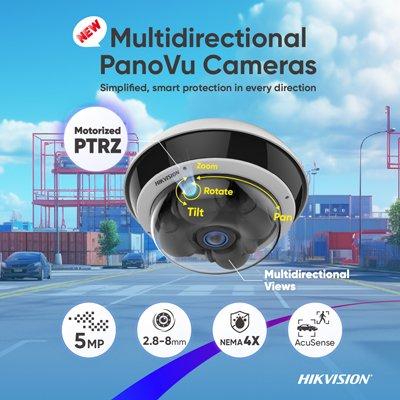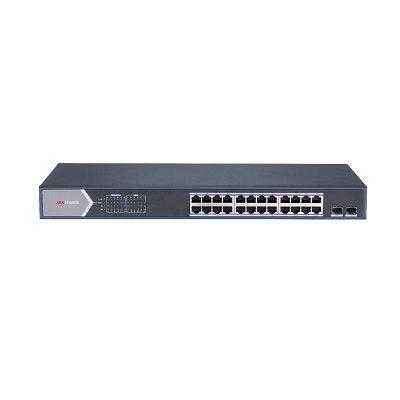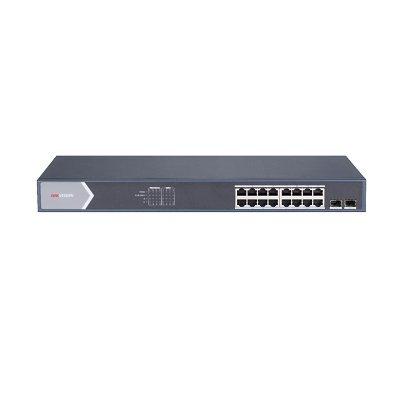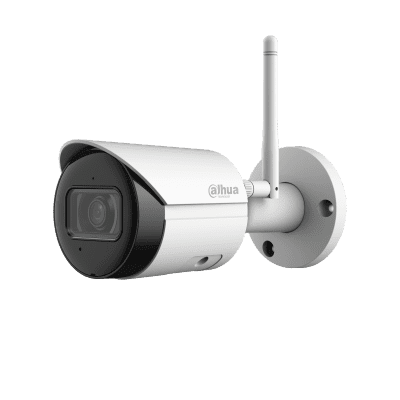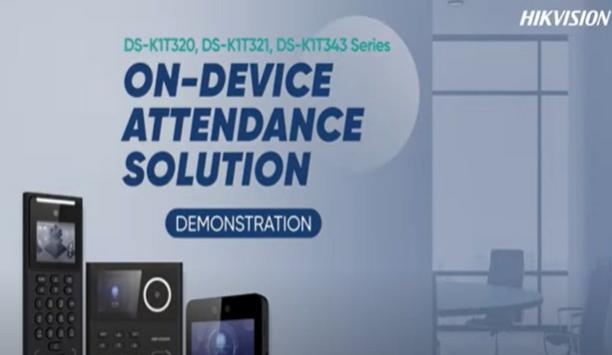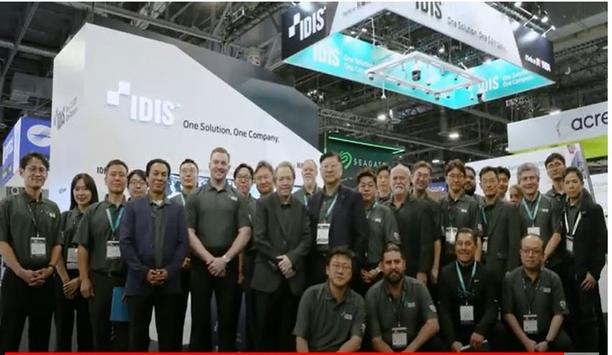Store surveillance
Anyone who has been in a proverbial cave for the last couple of years faced a language barrier at this year’s ISC West 2025 trade show. The industry’s latest wave of innovation has brought with it a new bounty of jargon and buzzwords, some of which I heard at ISC West for the first time. As a public service, we are happy to provide the following partial glossary to promote better understanding of the newer terms. (Some are new to the security industry but have been around in the IT...
ISC West 2025 in Las Vegas showcased the latest advancements in security technology, offering security professionals a glimpse into the future of the industry. This year's expo highlighted the growing influence of artificial intelligence (AI), cloud computing, and enhanced integration. The pioneering comprehensive and converged security event attracted nearly 29,000 industry professionals to the Venetian Convention Centre. Integration into unified platforms Several companies emphasised...
3DX-Ray has sold two AXIS-CXi, cabinet-based x-ray systems to secure high-threat sites in Rome, Italy. AXIS-CXi was originally designed to bring the same colour-differentiating image technology used in airport baggage screening, to the mail room environment. AXIS-CXi quickly showed its potential in a whole variety of security scenarios, from embassy lobbies to the homes of high-net-worth individuals. AXIS-CXi differentiated scans Grey scale is used for the recognition of shapes and the f...
Hailo, the pioneering provider of edge AI processors, will demonstrate smart security cameras empowered by its vision processing units (VPUs) as well as video management systems empowered by its AI accelerators at ISC West 2025 in Las Vegas, Nevada at booth #31065 of the Venetian Expo. At the heart of Hailo’s showcase is its full suite of AI processors, including the Hailo-15 vision processors, which integrate seamlessly into pioneering security cameras to deliver superior image quality a...
iDenfy, a globally recognised pioneer in regulatory technology specialising in identity verification (KYC), anti-money laundering (AML), and business verification (KYB), introduced its new KYC solution for Shopify merchants. The new app is listed on Shopify as a user-friendly, no-code solution for Shopify users who don’t want to build an ID verification solution from scratch. Automated verification system iDenfy’s integration provides online businesses with an automated verificati...
ISC West 2025, organised by RX and in collaboration with the Security Industry Association, concluded at the Venetian Expo in Las Vegas last week. The nation’s pioneering comprehensive and converged security event attracted nearly 29,000 industry professionals and left a lasting impression on the global security community. Over five action-packed days, ISC West welcomed more than 19,000 attendees and featured 750 exhibiting brands. ISC West innovations and ideas “ISC Wes...
News
The future of security requires smarter, more efficient and secure solutions, and Hanwha Vision is helping to drive this transformation with the launch of its most advanced AI-powered System on a Chip (SoC), Wisenet 9. After nearly four years of extensive research and testing, Wisenet 9’s advanced features help elevate our cameras into an AI-driven era, setting a new standard for performance, accuracy, and security. Unmatched clarity “With Wisenet 9, you can count on the superior image quality that delivers the best possible video in the toughest environments, as well as the accuracy of the AI-generated data, whether statistical or event-driven,” states John Lutz Boorman, Head of Product and Marketing at Hanwha Vision Europe. AI revolution at the Edge Wisenet 9’s enhanced edge AI capabilities are essential in this innovation era, where the volume and complexity of security threats demand real-time, accurate analysis. By elevating edge-device performance, AI empowers systems to quickly analyse vast amounts of video data and discern crucial patterns and anomalies. A key differentiator driving this transformation is the two Neural Processing Units (NPUs), which have improved inference performance three-fold compared to Wisenet 7, the previous SoC generation. While one NPU handles image processing, the other focuses on object detection and advanced analytics. This dual NPU concept was introduced to ensure video quality and analytics have independent resources, preventing one function from impacting the performance of the other. Unveiling hidden details Wisenet 9 uses AI to analyse visual data with greater precision. By leveraging a powerful NPU, the system moves past traditional image processing to extract critical information, unlocking previously unseen details with remarkable clarity in tough environments. This enhanced visual intelligence is achieved through a suite of sophisticated AI features, including AI-based extreme Wide Dynamic Range, AI-powered noise reduction, alongside image enhancements. Combined, these technologies deliver exceptional clarity, even under the most challenging conditions. The AI-driven image enhancement, powered by an independent NPU, ensures that every detail, no matter how subtle, is captured and analysed. AI efficiency redefined The H.265 codec provides high video quality with optimised bandwidth AI is powerful, but it can also be resource-intensive. Wisenet 9 flips that script. It’s not just smart, it’s efficient - optimising every aspect of its operation.By intelligently reducing noise, Wisenet 9 achieves a remarkable level of efficiency in data volume reduction, resulting in significantly reduced bandwidth consumption and storage requirements. This core efficiency is further bolstered by the latest H.265 compression technology. The H.265 codec provides high video quality with optimised bandwidth, ensuring reliable, real-time video processing and transmission - critical for uninterrupted 24/7 security. Furthermore, this optimised H.265 support enables consistently high performance in demanding environments, essential for system stability, and streamlines data management in cloud environments, efficiently controlling storage and transfer costs. Seamless integration Wisenet 9’s H.265 codec, aligned with current industry standards and ONVIF profiles, ensures broad hardware compatibility and seamless integration with your existing security infrastructure and provides a dependable foundation for long-term system reliability. Beyond this, Wisenet 9 leverages AI for advanced analytics. Its enhanced AI technology provides detailed attribute analysis, including colour, bag, face mask, glasses, age, and gender, along with other key analytics like people and vehicle counting, slip and fall detection, crowd detection, heatmap, queue management, and more, enabling faster and more informed decision-making. Smart surveillance tech To further amplify its capabilities, Wisenet 9 incorporates several key technologies that power the next generation of efficiency, including: Re-Identification RE-ID technology is a deep learning-based approach to matching visual identities across non-overlapping camera views. RE-ID extracts feature vectors representing unique visual attributes, enabling video management systems to recognise and track individuals even with changes in appearance or conditions. For example, it can identify a person entering a building with an orange jacket and later recognise the same person leaving with the jacket unzipped and a hat, across different cameras. Dynamic Privacy Masking This AI-based feature efficiently safeguards biometric personal data, ensuring compliance with privacy regulations. Wisenet 9 offers flexible masking options, including both opaque and mosaic masking, allowing users to tailor privacy protection to their specific needs and preferences. Widening horizons with expandable AI Wisenet 9 has been engineered with unparalleled AI capabilities to recognise security demands Recognising that security demands are as diverse as the industries they serve, Wisenet 9 has been engineered with unparalleled AI capabilities. This empowers users to tailor their security systems. § AI Packs: Wisenet 9 is compatible with AI Packs (Traffic, Retail, Factory), designed to deliver actionable insights specific to various sectors. AI Sound Classification AI-based sound classification enables rapid detection and directional awareness of critical events like gunshots, glass breaks, and screaming, to enhance situational awareness. Hanwha vision open platform Wisenet 9 empowers users to create customised security solutions by providing the flexibility to tailor their systems with custom applications for video analytics, storage, and other functionalities. Improved end-to-end protection Wisenet 9 significantly enhances end-to-end protection by building upon the robust security foundation of Wisenet 7. It inherits essential features like Secure Storage, OS, and Boot, which protect critical chipset data and prevent unauthorised software execution. Moreover, the inclusion of a FIPS 140-3 Level 3 elevates security to an exceptional standard. This certification guarantees that the chipset adheres to rigorous security protocols, assuring users of comprehensive data protection.
At ISC West 2025, Resideo Technologies, a pioneering provider of solutions for home comfort, security and safety, introduced the new First Alert® CX4 Camera Series. Compatible with both the Resideo ProSeries Security System and Resideo’s new First Alert® VISTA® Hybrid Security System, the cameras offer ultra-high-definition continuous recording and enhanced analytics to monitor homes and small and medium businesses (SMB). Advanced video analytics “Our new First Alert CX4 Cameras are our most capable cameras ever and provide the features end-users need along with the brand name they can trust," said Ryan Park, Senior Product Director of Safety and Security at Resideo. "They deliver ultra-high-definition video, advanced video analytics and seamless integration with our security systems to provide comprehensive detection for homes and businesses." Three different models of the First Alert CX4 Camera Series With 4K sharpness, the First Alert CX4 Camera Series offers three different models to cover a range of applications: CX4B Bullet Camera for perimeter monitoring, warehouses, or retail applications. CX4T Turret Camera for lobbies, stairwells, and retail areas. CX4D Dome Camera for entrances, exits, offices, or food service applications. Integration with ProSeries and VISTA Hybrid Security System The Camera Series offers seamless integration with both the ProSeries and VISTA Hybrid Security System, and the following features: Advanced resolution. With an 8-megapixel resolution and a high-performance image sensor, the CX4 Series captures critical details with clarity, making it easy to identify faces, licence plates and other important details. Edge video storage. Edge-based continuous recording keeps video data on-site, reducing network requirements and costs. Cloud-based video-event storage sends the important event video to the cloud, reducing the impact of hardware theft or tampering while protecting important information. Intelligent viewing capabilities. Users can view live feeds of multiple cameras on one screen with the familiar Total Connect® 2.0 experience. Intelligent analytics identify people, vehicles, animals and packages to reduce unnecessary notifications, delivering actionable alerts that matter most. The First Alert CX4 Camera Series will be available at ADI Global Distribution, a Resideo company, in the third quarter, and were on display at the Resideo booth #10047.
Omada by TP-Link and VIGI by TP-Link, TP-Link Systems Inc.’s exclusive business solutions brands, are set to make waves at ISC West 2025 with the debut of their groundbreaking unified networking and surveillance solutions. At the event, the brands will showcase a seamless integration of VIGI’s cutting-edge surveillance solutions, Omada’s comprehensive networking systems, and the Omada Central platform—a revolutionary cloud-based solution that unifies the management of networking and surveillance under one roof. Secure & scalable Focused exclusively on the B2B market, Omada and VIGI deliver reliable, secure, and intuitive networking and surveillance products tailored to the unique needs of SMBs and enterprises. Designed to address diverse scenarios—including retail, hospitality, offices, MDUs, and outdoor environments—Omada and VIGI empower businesses to enhance security, streamline operations, and drive efficiency. Unified networking and surveillance solutions Integrating networking and surveillance into a single platform, TP-Link eliminates the system managment complecity By integrating networking and surveillance into a single platform, TP-Link eliminates the complexity of managing multiple systems. This unified approach enables unified management; easy deployment and setup; and remote troubleshooting, reducing operational overhead while enhancing efficiency, scalability, and security for businesses across industries. Omada Central is the cornerstone of TP-Link’s unified approach, offering a single platform to manage both Omada networking devices and VIGI surveillance systems. This next-generation solution enables businesses to seamlessly manage gateways, switches, access points, and security surveillance equipment across multiple locations. Simplified Management It simplifies setup with intelligent device recognition, auto surveillance VLAN, and Zero-Touch Provisioning while reducing total cost of ownership with a single-vendor solution. The platform also offers a free version, Omada Central Essentials, making it accessible for businesses of all sizes. VIGI: professional surveillance solutions VIGI provides professional, reliable, and comprehensive surveillance solutions tailored for businesses. Offering a diverse product range—including bullet, turret, dome, and fisheye cameras, 4/8/16/32/64-channel NVRs, 90W/180W solar power systems, cloud and local VMS, and user-friendly apps—VIGI ensures robust security while enhancing operational efficiency and profitability. VIGI offers a comprehensive range of durable cameras designed to deliver guaranteed high-quality images. The product lineup includes: 180° Panoramic 4K Cameras with Red-Blue Warning Lights Dual-Lens Stitching 4K Cameras 4G Outdoor Cameras with 3 LAN Ports AI ISP-Powered ColorPro 2.0 Cameras 5X Optical Zoom Cameras Complementing these cameras are 64-Channel H.265+ NVRs featuring 4 SATAs with a up to 64TB storage capability and 320Mbps incoming/outgoing bandwidth. Additionally, VIGI’s easy-to-install and stable solar power solution ensures long standby performance, making it ideal for off-grid locations. VIGI CVM System VIGI’s Cloud Video Management System (VMS) provides free, centralised management for multiple sites, leveraging AWS-based reliability and zero-touch maintenance to reduce on-site troubleshooting costs and ensure seamless surveillance. Complementing this is VIGI’s NPU-powered AI technology, offering advanced detection and analysis capabilities such as Behavior and Object Detection; People and Vehicle Attributes Analysis; and Precise People Counting. Together, these innovations deliver smarter, more efficient security solutions that enhance operational efficiency and drive business success. Omada: Comprehensive Networking Solutions Omada delivers a complete set of SDN solutions, designed to meet the needs of businesses With a full portfolio that includes access points, gateways, hardware controllers, cloud controllers, and a diverse range of switches, Omada provides end-to-end networking solutions tailored for scalability, performance, and ease of management. Omada’s full lineup of Wi-Fi 7 access points redefine wireless connectivity, offering unparalleled speed and reliability for both indoor and outdoor environments. Complementing these are Outdoor 4G Wi-Fi Gateways and connectivity solutions, such as the Outdoor PoE Switch and Wireless Long-Range PtMP/PtP Bridge, which ensure reliable networking even in remote or challenging locations. The switch portfolio spans from unmanaged switches for plug-and-play simplicity to easy-managed switches and advanced L3/L2 + switches, catering to businesses of all sizes and complexities. Effortless surveillance connectivity The Agile Series of Easy Managed PoE Switches with Free Cloud, designed specifically for surveillance systems. Paired with Omada Central Essentials for free cloud access, the Agile Series features Auto IP Camera/NVR Recognition, Extend Mode for PoE up to 250m, enhanced PoE Auto Recovery, and Remote Troubleshooting Tools with Cable Test, Reboot PoE Port Management, and SSH to minimise downtime, making it an ideal choice for businesses seeking efficient and scalable networking solutions tailored to surveillance needs. Seamless connectivity Omada & VIGI unified networking and surveillance solutions are tailored to meet the needs of diverse industries, including retail, hospitality, offices, residential, and outdoor environments. By combining Omada’s networking expertise, VIGI’s surveillance solutions, and the Omada Central platform, TP-Link delivers agile, secure, and scalable ecosystems that simplify infrastructure and enhance operational efficiency across the board.
Robotic Assistance Devices, Inc. (RAD), a subsidiary of Artificial Intelligence Technology Solutions, Inc., announced the expansion of its popular RIO™ solar-powered, mobile security solution lineup. Named RIO Mini, the new security solution is now in production, with the Company forecasting that it can add up to 500 units to its sales expectations this fiscal year. Mobile surveillance systems The Company joins LiveView Technologies Inc., which raised $50 million in a Series B round in 2022, in finding success and growth in this rapidly expanding market. LiveView Technologies has demonstrated strong demand for solar-powered mobile surveillance systems, validating the market opportunity that RAD is now addressing with RIO Mini. RAD’s award-winning ROSA™ device RIO Mini surpasses other affordable mobile security solutions in performance and value Utilising a dual configuration of RAD’s award-winning ROSA™ device, RIO Mini surpasses other affordable mobile security solutions in performance and value. ROSA is a multiple award-winning, compact, self-contained, portable, security and communication solution that can be installed and activated in about 15 minutes. ROSA’s AI-driven security analytics ROSA’s AI-driven security analytics include human and vehicle detection, and complete integration with RAD’s software suite notification and autonomous response library. Two-way communication is optimised for cellular, including live video from ROSA’s high-resolution, full-color, always-on cameras. RAD has published six Case Studies detailing how ROSA has helped eliminate instances of theft, trespassing and loitering at retail centres, hospital campuses, multi-family communities, car rental locations and construction sites across the country. RAD’s existing RIO lineup RIO Mini joins RAD’s existing RIO lineup, which includes the popular RIO 180 and RIO 360 units RIO Mini joins RAD’s existing RIO lineup, which includes the popular RIO 180 and RIO 360 units, further filling in the product family. RIO Mini is expected to achieve greater profitability than the primary RIO lineup while being substantially less expensive for clients. It will feature reduced analytics processing and limitations on other select features while maintaining RAD’s core Autonomous Intelligent Response capabilities. The device is enabled by a lower-cost modified version of RAD G’s RADPack, providing consistent performance in a compact and economical format. Development by AITX’s various subsidiaries Steve Reinharz, CEO/CTO of AITX and RAD, commented, “We are starting to see the benefits after years of hardware and software development by AITX’s various subsidiaries. Utilising internally developed analytics and electronics hardware and benefiting from our complete control of the supply chain, we are well-positioned to compete aggressively in the mobile surveillance unit marketplace." "This new solution will enable dealers and our internal sales team to expand their target markets to include clients that want the basics of intelligent autonomous response.” How RIO Mini’s streamlined design and accessible pricing The response from RAD’s channel partners, existing clients, and new prospects was positive As with all RAD security solutions, RIO Mini is supported by SARA™, the Company’s multiple award-winning AI-based software platform. SARA (Speaking Autonomous Responsive Agent) provides real-time responsiveness, centralised device management, and seamless integration across RAD’s ecosystem of autonomous security technologies. RIO Mini was introduced to the public last week during ISC West in Las Vegas, the security industry’s largest and most influential trade show. The response from RAD’s channel partners, existing clients, and new prospects was overwhelmingly positive. Many attendees expressed interest in how RIO Mini’s streamlined design and accessible pricing could open new markets and use cases that complement the existing RIO offerings. Introduction of RIO Mini With the introduction of RIO Mini, RAD is positioned to reach a broader segment of the market, including clients who may have previously hesitated to adopt advanced security solutions due to budget limitations. This addition to the product lineup reflects the Company’s ongoing focus on addressing evolving market demands with practical, high-performance offerings. RAD’s reputation for innovation RIO Mini reinforces RAD’s reputation for innovation and dependability while making intelligent autonomous response more accessible across a wider range of use cases. RIO Mini’s aggressive pricing has not been publicly disclosed. Interested dealers, clients, and prospects are encouraged to contact RAD directly for additional details and availability.
DeterTech, a pioneer in intruder detection and identification, is proud to announce the immediate availability of SmartSpray® for rental or purchase. It is considered a game-changer in tackling retail crime as it enables police to forensically link masked offenders back to the scene of their crime, even weeks after they’ve left the store. Effective CCTV storage Retail crime is at its highest level on record, with over 2,000 incidents of violence and abuse per day Retail crime is at its highest level on record, with over 2,000 incidents of violence and abuse per day, reported in the British Retail Consortium’s Annual Crime Survey. A key factor is perpetrators’ feeling emboldened that they can anonymously steal, assault and abuse staff, and escape before security or police can intervene. While in-store CCTV can be effective, it is easily defeated by the most organised and violent offenders who choose to obscure their faces. SmartSpray system The SmartSpray system can be deployed standalone or integrated with the existing security system. When triggered, it releases a precise spray of SmartWater®, a forensic liquid that contains a code unique to each specific store. This glows under UV light and remains on skin and clothing for weeks, allowing police to identify suspects and pursue convictions. DeterTech’s forensic scientists DeterTech’s forensic scientists supply analysis and testimony in support of a belief DeterTech’s forensic scientists provide analysis and testimony in support of a conviction to the police and courts free of charge. Furthermore, they need only a speck smaller than the full stop at the end of this sentence to conclusively link an individual back to the scene of their crime. SmartSpray installation and servicing SmartSpray is immediately available for rental or purchase on flexible terms, including installation and servicing. DeterTech has also committed to providing unlimited refills free of charge following any activation for which a crime reference number is supplied. It is hoped this will further incentivise retailers to report all incidents to the police so that the true scale of retail crime can be nationally recognised. Cutting-edge solutions DeterTech has also committed to providing total refills free of charge BT is one of the first retailers to have deployed SmartSpray in selected stores. Richie Iwanoff, Corporate Investigations Team Manager, BT, says: “The well-being of our staff and customers is our number one priority." "We’re proud to be using cutting-edge solutions to keep them safe at all times. I sleep easier knowing criminals will think twice before targeting us”. DeterTech with businesses and communities Gary Higgins, Director of Security and Risk, DeterTech, adds: “SmartSpray has been very well received by both retailers and the police who recognise it will deter offences and help put violent criminals behind bars. It supports our purpose here at DeterTech of working with businesses and communities every day to provide greater peace of mind.” Hazel Goss, Development Officer, Secured by Design, concludes, “This is exactly the kind of collaboration we want to see from retailers, security providers, and law enforcement. Enhancing the police’s chances of unmasking offenders is vital in combating retail crime, which is sadly soaring across the country.”
Corsha, the pioneer in securing machine-to-machine (M2M) traffic for operational systems and critical infrastructure. Has announced an $18 million Series A-1 funding round led by SineWave Ventures, with participation from Razor’s Edge Ventures and Ten Eleven Ventures. Automated Trust Chains Machine identities currently outnumber human identities by a ratio of 50:1 Machine identities currently outnumber human identities by a ratio of 50:1 and are poised to accelerate further with increases in automation and the emergence of agentic AI. Organisations require a machine identity provider to authenticate, manage, and govern the rapidly growing traffic between machines. Due to legacy systems connecting with modern cloud-native systems, M2M communication can be particularly risky in operational technology (OT) and critical infrastructure environments. Imagine the challenges of securely connecting AI/ML models in the cloud to robotic controllers or manufacturing pipelines on a shop floor. Machine identity security To address this growing challenge, Corsha syncs with traditional IdPs like EntraID, Amazon IAM, and keycloak, builds and manages dynamic machine identities, and brings MFA to machines, securing and auditing M2M connections across OT and cloud environments. Through Corsha’s Machine Identity Provider, the company ensures that all machine-to-machine communication anywhere across an organisation is secure and can be trusted. Securing operational infrastructure “There’s such a huge modernisation opportunity in connecting operational systems and critical infrastructure yet without a strong identity solution, the risk is too high,” said Anusha Iyer, Founder and CEO of Corsha. “That is why we are so committed to our vision to securely connect the operational systems that run our world, delivering the first IdP focused on machines. Today’s significant investment from SineWave, Razor’s Edge, and Ten Eleven Ventures represents a strong vote of confidence in the Corsha team and platform and a strong belief in the value we deliver for our customers.” “Corsha has already proven we can support some of the most challenging technology stacks in the U.S. public sector — including for the U.S. Air Force — and we are thrilled to use this funding to bring our platform to more organisations globally.” Machine-first security “As machines begin to outnumber humans as actors on operational networks and the cloud, Corsha's ability to securely identify these non-human actors and control their access to systems and data enables exciting new ways to securely get things done,” said Pat Muio, Partner at Sinewave Ventures. “It is a solution that is urgently needed.” Go-to-market expansion Corsha plans to use the funding for a variety of objectives, including: Expanding the company’s Go-to-Market team to help more customers in the operational systems, critical infrastructure, and manufacturing sectors Launching Corsha Labs, a physical and digital research space to showcase Corsha’s “shop floor to cloud” expertise and take the platform to the next level Scaling the use of AI/ML in the Corsha “m-IdP” to expand our agentless behavioral identities as well as adaptive identity and access management (IAM) for M2M communication Momentum milestones The funding builds upon Corsha’s already robust momentum, including: 100% YoY ARR by growth An authorisation to operate with the U.S. Government in critical manufacturing environments The addition of Jeff Hudson, CEO Emeritus of Venafi - a CyberArk company, to Corsha’s Board of Directors
The future of security requires smarter, more efficient and secure solutions, and Hanwha Vision is helping to drive this transformation with the launch of its most advanced AI-powered System on a Chip (SoC), Wisenet 9. After nearly four years of extensive research and testing, Wisenet 9’s advanced features help elevate our cameras into an AI-driven era, setting a new standard for performance, accuracy, and security. Unmatched clarity “With Wisenet 9, you can count on the superior image quality that delivers the best possible video in the toughest environments, as well as the accuracy of the AI-generated data, whether statistical or event-driven,” states John Lutz Boorman, Head of Product and Marketing at Hanwha Vision Europe. AI revolution at the Edge Wisenet 9’s enhanced edge AI capabilities are essential in this innovation era, where the volume and complexity of security threats demand real-time, accurate analysis. By elevating edge-device performance, AI empowers systems to quickly analyse vast amounts of video data and discern crucial patterns and anomalies. A key differentiator driving this transformation is the two Neural Processing Units (NPUs), which have improved inference performance three-fold compared to Wisenet 7, the previous SoC generation. While one NPU handles image processing, the other focuses on object detection and advanced analytics. This dual NPU concept was introduced to ensure video quality and analytics have independent resources, preventing one function from impacting the performance of the other. Unveiling hidden details Wisenet 9 uses AI to analyse visual data with greater precision. By leveraging a powerful NPU, the system moves past traditional image processing to extract critical information, unlocking previously unseen details with remarkable clarity in tough environments. This enhanced visual intelligence is achieved through a suite of sophisticated AI features, including AI-based extreme Wide Dynamic Range, AI-powered noise reduction, alongside image enhancements. Combined, these technologies deliver exceptional clarity, even under the most challenging conditions. The AI-driven image enhancement, powered by an independent NPU, ensures that every detail, no matter how subtle, is captured and analysed. AI efficiency redefined The H.265 codec provides high video quality with optimised bandwidth AI is powerful, but it can also be resource-intensive. Wisenet 9 flips that script. It’s not just smart, it’s efficient - optimising every aspect of its operation.By intelligently reducing noise, Wisenet 9 achieves a remarkable level of efficiency in data volume reduction, resulting in significantly reduced bandwidth consumption and storage requirements. This core efficiency is further bolstered by the latest H.265 compression technology. The H.265 codec provides high video quality with optimised bandwidth, ensuring reliable, real-time video processing and transmission - critical for uninterrupted 24/7 security. Furthermore, this optimised H.265 support enables consistently high performance in demanding environments, essential for system stability, and streamlines data management in cloud environments, efficiently controlling storage and transfer costs. Seamless integration Wisenet 9’s H.265 codec, aligned with current industry standards and ONVIF profiles, ensures broad hardware compatibility and seamless integration with your existing security infrastructure and provides a dependable foundation for long-term system reliability. Beyond this, Wisenet 9 leverages AI for advanced analytics. Its enhanced AI technology provides detailed attribute analysis, including colour, bag, face mask, glasses, age, and gender, along with other key analytics like people and vehicle counting, slip and fall detection, crowd detection, heatmap, queue management, and more, enabling faster and more informed decision-making. Smart surveillance tech To further amplify its capabilities, Wisenet 9 incorporates several key technologies that power the next generation of efficiency, including: Re-Identification RE-ID technology is a deep learning-based approach to matching visual identities across non-overlapping camera views. RE-ID extracts feature vectors representing unique visual attributes, enabling video management systems to recognise and track individuals even with changes in appearance or conditions. For example, it can identify a person entering a building with an orange jacket and later recognise the same person leaving with the jacket unzipped and a hat, across different cameras. Dynamic Privacy Masking This AI-based feature efficiently safeguards biometric personal data, ensuring compliance with privacy regulations. Wisenet 9 offers flexible masking options, including both opaque and mosaic masking, allowing users to tailor privacy protection to their specific needs and preferences. Widening horizons with expandable AI Wisenet 9 has been engineered with unparalleled AI capabilities to recognise security demands Recognising that security demands are as diverse as the industries they serve, Wisenet 9 has been engineered with unparalleled AI capabilities. This empowers users to tailor their security systems. § AI Packs: Wisenet 9 is compatible with AI Packs (Traffic, Retail, Factory), designed to deliver actionable insights specific to various sectors. AI Sound Classification AI-based sound classification enables rapid detection and directional awareness of critical events like gunshots, glass breaks, and screaming, to enhance situational awareness. Hanwha vision open platform Wisenet 9 empowers users to create customised security solutions by providing the flexibility to tailor their systems with custom applications for video analytics, storage, and other functionalities. Improved end-to-end protection Wisenet 9 significantly enhances end-to-end protection by building upon the robust security foundation of Wisenet 7. It inherits essential features like Secure Storage, OS, and Boot, which protect critical chipset data and prevent unauthorised software execution. Moreover, the inclusion of a FIPS 140-3 Level 3 elevates security to an exceptional standard. This certification guarantees that the chipset adheres to rigorous security protocols, assuring users of comprehensive data protection.
At ISC West 2025, Resideo Technologies, a pioneering provider of solutions for home comfort, security and safety, introduced the new First Alert® CX4 Camera Series. Compatible with both the Resideo ProSeries Security System and Resideo’s new First Alert® VISTA® Hybrid Security System, the cameras offer ultra-high-definition continuous recording and enhanced analytics to monitor homes and small and medium businesses (SMB). Advanced video analytics “Our new First Alert CX4 Cameras are our most capable cameras ever and provide the features end-users need along with the brand name they can trust," said Ryan Park, Senior Product Director of Safety and Security at Resideo. "They deliver ultra-high-definition video, advanced video analytics and seamless integration with our security systems to provide comprehensive detection for homes and businesses." Three different models of the First Alert CX4 Camera Series With 4K sharpness, the First Alert CX4 Camera Series offers three different models to cover a range of applications: CX4B Bullet Camera for perimeter monitoring, warehouses, or retail applications. CX4T Turret Camera for lobbies, stairwells, and retail areas. CX4D Dome Camera for entrances, exits, offices, or food service applications. Integration with ProSeries and VISTA Hybrid Security System The Camera Series offers seamless integration with both the ProSeries and VISTA Hybrid Security System, and the following features: Advanced resolution. With an 8-megapixel resolution and a high-performance image sensor, the CX4 Series captures critical details with clarity, making it easy to identify faces, licence plates and other important details. Edge video storage. Edge-based continuous recording keeps video data on-site, reducing network requirements and costs. Cloud-based video-event storage sends the important event video to the cloud, reducing the impact of hardware theft or tampering while protecting important information. Intelligent viewing capabilities. Users can view live feeds of multiple cameras on one screen with the familiar Total Connect® 2.0 experience. Intelligent analytics identify people, vehicles, animals and packages to reduce unnecessary notifications, delivering actionable alerts that matter most. The First Alert CX4 Camera Series will be available at ADI Global Distribution, a Resideo company, in the third quarter, and were on display at the Resideo booth #10047.
Omada by TP-Link and VIGI by TP-Link, TP-Link Systems Inc.’s exclusive business solutions brands, are set to make waves at ISC West 2025 with the debut of their groundbreaking unified networking and surveillance solutions. At the event, the brands will showcase a seamless integration of VIGI’s cutting-edge surveillance solutions, Omada’s comprehensive networking systems, and the Omada Central platform—a revolutionary cloud-based solution that unifies the management of networking and surveillance under one roof. Secure & scalable Focused exclusively on the B2B market, Omada and VIGI deliver reliable, secure, and intuitive networking and surveillance products tailored to the unique needs of SMBs and enterprises. Designed to address diverse scenarios—including retail, hospitality, offices, MDUs, and outdoor environments—Omada and VIGI empower businesses to enhance security, streamline operations, and drive efficiency. Unified networking and surveillance solutions Integrating networking and surveillance into a single platform, TP-Link eliminates the system managment complecity By integrating networking and surveillance into a single platform, TP-Link eliminates the complexity of managing multiple systems. This unified approach enables unified management; easy deployment and setup; and remote troubleshooting, reducing operational overhead while enhancing efficiency, scalability, and security for businesses across industries. Omada Central is the cornerstone of TP-Link’s unified approach, offering a single platform to manage both Omada networking devices and VIGI surveillance systems. This next-generation solution enables businesses to seamlessly manage gateways, switches, access points, and security surveillance equipment across multiple locations. Simplified Management It simplifies setup with intelligent device recognition, auto surveillance VLAN, and Zero-Touch Provisioning while reducing total cost of ownership with a single-vendor solution. The platform also offers a free version, Omada Central Essentials, making it accessible for businesses of all sizes. VIGI: professional surveillance solutions VIGI provides professional, reliable, and comprehensive surveillance solutions tailored for businesses. Offering a diverse product range—including bullet, turret, dome, and fisheye cameras, 4/8/16/32/64-channel NVRs, 90W/180W solar power systems, cloud and local VMS, and user-friendly apps—VIGI ensures robust security while enhancing operational efficiency and profitability. VIGI offers a comprehensive range of durable cameras designed to deliver guaranteed high-quality images. The product lineup includes: 180° Panoramic 4K Cameras with Red-Blue Warning Lights Dual-Lens Stitching 4K Cameras 4G Outdoor Cameras with 3 LAN Ports AI ISP-Powered ColorPro 2.0 Cameras 5X Optical Zoom Cameras Complementing these cameras are 64-Channel H.265+ NVRs featuring 4 SATAs with a up to 64TB storage capability and 320Mbps incoming/outgoing bandwidth. Additionally, VIGI’s easy-to-install and stable solar power solution ensures long standby performance, making it ideal for off-grid locations. VIGI CVM System VIGI’s Cloud Video Management System (VMS) provides free, centralised management for multiple sites, leveraging AWS-based reliability and zero-touch maintenance to reduce on-site troubleshooting costs and ensure seamless surveillance. Complementing this is VIGI’s NPU-powered AI technology, offering advanced detection and analysis capabilities such as Behavior and Object Detection; People and Vehicle Attributes Analysis; and Precise People Counting. Together, these innovations deliver smarter, more efficient security solutions that enhance operational efficiency and drive business success. Omada: Comprehensive Networking Solutions Omada delivers a complete set of SDN solutions, designed to meet the needs of businesses With a full portfolio that includes access points, gateways, hardware controllers, cloud controllers, and a diverse range of switches, Omada provides end-to-end networking solutions tailored for scalability, performance, and ease of management. Omada’s full lineup of Wi-Fi 7 access points redefine wireless connectivity, offering unparalleled speed and reliability for both indoor and outdoor environments. Complementing these are Outdoor 4G Wi-Fi Gateways and connectivity solutions, such as the Outdoor PoE Switch and Wireless Long-Range PtMP/PtP Bridge, which ensure reliable networking even in remote or challenging locations. The switch portfolio spans from unmanaged switches for plug-and-play simplicity to easy-managed switches and advanced L3/L2 + switches, catering to businesses of all sizes and complexities. Effortless surveillance connectivity The Agile Series of Easy Managed PoE Switches with Free Cloud, designed specifically for surveillance systems. Paired with Omada Central Essentials for free cloud access, the Agile Series features Auto IP Camera/NVR Recognition, Extend Mode for PoE up to 250m, enhanced PoE Auto Recovery, and Remote Troubleshooting Tools with Cable Test, Reboot PoE Port Management, and SSH to minimise downtime, making it an ideal choice for businesses seeking efficient and scalable networking solutions tailored to surveillance needs. Seamless connectivity Omada & VIGI unified networking and surveillance solutions are tailored to meet the needs of diverse industries, including retail, hospitality, offices, residential, and outdoor environments. By combining Omada’s networking expertise, VIGI’s surveillance solutions, and the Omada Central platform, TP-Link delivers agile, secure, and scalable ecosystems that simplify infrastructure and enhance operational efficiency across the board.
Robotic Assistance Devices, Inc. (RAD), a subsidiary of Artificial Intelligence Technology Solutions, Inc., announced the expansion of its popular RIO™ solar-powered, mobile security solution lineup. Named RIO Mini, the new security solution is now in production, with the Company forecasting that it can add up to 500 units to its sales expectations this fiscal year. Mobile surveillance systems The Company joins LiveView Technologies Inc., which raised $50 million in a Series B round in 2022, in finding success and growth in this rapidly expanding market. LiveView Technologies has demonstrated strong demand for solar-powered mobile surveillance systems, validating the market opportunity that RAD is now addressing with RIO Mini. RAD’s award-winning ROSA™ device RIO Mini surpasses other affordable mobile security solutions in performance and value Utilising a dual configuration of RAD’s award-winning ROSA™ device, RIO Mini surpasses other affordable mobile security solutions in performance and value. ROSA is a multiple award-winning, compact, self-contained, portable, security and communication solution that can be installed and activated in about 15 minutes. ROSA’s AI-driven security analytics ROSA’s AI-driven security analytics include human and vehicle detection, and complete integration with RAD’s software suite notification and autonomous response library. Two-way communication is optimised for cellular, including live video from ROSA’s high-resolution, full-color, always-on cameras. RAD has published six Case Studies detailing how ROSA has helped eliminate instances of theft, trespassing and loitering at retail centres, hospital campuses, multi-family communities, car rental locations and construction sites across the country. RAD’s existing RIO lineup RIO Mini joins RAD’s existing RIO lineup, which includes the popular RIO 180 and RIO 360 units RIO Mini joins RAD’s existing RIO lineup, which includes the popular RIO 180 and RIO 360 units, further filling in the product family. RIO Mini is expected to achieve greater profitability than the primary RIO lineup while being substantially less expensive for clients. It will feature reduced analytics processing and limitations on other select features while maintaining RAD’s core Autonomous Intelligent Response capabilities. The device is enabled by a lower-cost modified version of RAD G’s RADPack, providing consistent performance in a compact and economical format. Development by AITX’s various subsidiaries Steve Reinharz, CEO/CTO of AITX and RAD, commented, “We are starting to see the benefits after years of hardware and software development by AITX’s various subsidiaries. Utilising internally developed analytics and electronics hardware and benefiting from our complete control of the supply chain, we are well-positioned to compete aggressively in the mobile surveillance unit marketplace." "This new solution will enable dealers and our internal sales team to expand their target markets to include clients that want the basics of intelligent autonomous response.” How RIO Mini’s streamlined design and accessible pricing The response from RAD’s channel partners, existing clients, and new prospects was positive As with all RAD security solutions, RIO Mini is supported by SARA™, the Company’s multiple award-winning AI-based software platform. SARA (Speaking Autonomous Responsive Agent) provides real-time responsiveness, centralised device management, and seamless integration across RAD’s ecosystem of autonomous security technologies. RIO Mini was introduced to the public last week during ISC West in Las Vegas, the security industry’s largest and most influential trade show. The response from RAD’s channel partners, existing clients, and new prospects was overwhelmingly positive. Many attendees expressed interest in how RIO Mini’s streamlined design and accessible pricing could open new markets and use cases that complement the existing RIO offerings. Introduction of RIO Mini With the introduction of RIO Mini, RAD is positioned to reach a broader segment of the market, including clients who may have previously hesitated to adopt advanced security solutions due to budget limitations. This addition to the product lineup reflects the Company’s ongoing focus on addressing evolving market demands with practical, high-performance offerings. RAD’s reputation for innovation RIO Mini reinforces RAD’s reputation for innovation and dependability while making intelligent autonomous response more accessible across a wider range of use cases. RIO Mini’s aggressive pricing has not been publicly disclosed. Interested dealers, clients, and prospects are encouraged to contact RAD directly for additional details and availability.
DeterTech, a pioneer in intruder detection and identification, is proud to announce the immediate availability of SmartSpray® for rental or purchase. It is considered a game-changer in tackling retail crime as it enables police to forensically link masked offenders back to the scene of their crime, even weeks after they’ve left the store. Effective CCTV storage Retail crime is at its highest level on record, with over 2,000 incidents of violence and abuse per day Retail crime is at its highest level on record, with over 2,000 incidents of violence and abuse per day, reported in the British Retail Consortium’s Annual Crime Survey. A key factor is perpetrators’ feeling emboldened that they can anonymously steal, assault and abuse staff, and escape before security or police can intervene. While in-store CCTV can be effective, it is easily defeated by the most organised and violent offenders who choose to obscure their faces. SmartSpray system The SmartSpray system can be deployed standalone or integrated with the existing security system. When triggered, it releases a precise spray of SmartWater®, a forensic liquid that contains a code unique to each specific store. This glows under UV light and remains on skin and clothing for weeks, allowing police to identify suspects and pursue convictions. DeterTech’s forensic scientists DeterTech’s forensic scientists supply analysis and testimony in support of a belief DeterTech’s forensic scientists provide analysis and testimony in support of a conviction to the police and courts free of charge. Furthermore, they need only a speck smaller than the full stop at the end of this sentence to conclusively link an individual back to the scene of their crime. SmartSpray installation and servicing SmartSpray is immediately available for rental or purchase on flexible terms, including installation and servicing. DeterTech has also committed to providing unlimited refills free of charge following any activation for which a crime reference number is supplied. It is hoped this will further incentivise retailers to report all incidents to the police so that the true scale of retail crime can be nationally recognised. Cutting-edge solutions DeterTech has also committed to providing total refills free of charge BT is one of the first retailers to have deployed SmartSpray in selected stores. Richie Iwanoff, Corporate Investigations Team Manager, BT, says: “The well-being of our staff and customers is our number one priority." "We’re proud to be using cutting-edge solutions to keep them safe at all times. I sleep easier knowing criminals will think twice before targeting us”. DeterTech with businesses and communities Gary Higgins, Director of Security and Risk, DeterTech, adds: “SmartSpray has been very well received by both retailers and the police who recognise it will deter offences and help put violent criminals behind bars. It supports our purpose here at DeterTech of working with businesses and communities every day to provide greater peace of mind.” Hazel Goss, Development Officer, Secured by Design, concludes, “This is exactly the kind of collaboration we want to see from retailers, security providers, and law enforcement. Enhancing the police’s chances of unmasking offenders is vital in combating retail crime, which is sadly soaring across the country.”
Corsha, the pioneer in securing machine-to-machine (M2M) traffic for operational systems and critical infrastructure. Has announced an $18 million Series A-1 funding round led by SineWave Ventures, with participation from Razor’s Edge Ventures and Ten Eleven Ventures. Automated Trust Chains Machine identities currently outnumber human identities by a ratio of 50:1 Machine identities currently outnumber human identities by a ratio of 50:1 and are poised to accelerate further with increases in automation and the emergence of agentic AI. Organisations require a machine identity provider to authenticate, manage, and govern the rapidly growing traffic between machines. Due to legacy systems connecting with modern cloud-native systems, M2M communication can be particularly risky in operational technology (OT) and critical infrastructure environments. Imagine the challenges of securely connecting AI/ML models in the cloud to robotic controllers or manufacturing pipelines on a shop floor. Machine identity security To address this growing challenge, Corsha syncs with traditional IdPs like EntraID, Amazon IAM, and keycloak, builds and manages dynamic machine identities, and brings MFA to machines, securing and auditing M2M connections across OT and cloud environments. Through Corsha’s Machine Identity Provider, the company ensures that all machine-to-machine communication anywhere across an organisation is secure and can be trusted. Securing operational infrastructure “There’s such a huge modernisation opportunity in connecting operational systems and critical infrastructure yet without a strong identity solution, the risk is too high,” said Anusha Iyer, Founder and CEO of Corsha. “That is why we are so committed to our vision to securely connect the operational systems that run our world, delivering the first IdP focused on machines. Today’s significant investment from SineWave, Razor’s Edge, and Ten Eleven Ventures represents a strong vote of confidence in the Corsha team and platform and a strong belief in the value we deliver for our customers.” “Corsha has already proven we can support some of the most challenging technology stacks in the U.S. public sector — including for the U.S. Air Force — and we are thrilled to use this funding to bring our platform to more organisations globally.” Machine-first security “As machines begin to outnumber humans as actors on operational networks and the cloud, Corsha's ability to securely identify these non-human actors and control their access to systems and data enables exciting new ways to securely get things done,” said Pat Muio, Partner at Sinewave Ventures. “It is a solution that is urgently needed.” Go-to-market expansion Corsha plans to use the funding for a variety of objectives, including: Expanding the company’s Go-to-Market team to help more customers in the operational systems, critical infrastructure, and manufacturing sectors Launching Corsha Labs, a physical and digital research space to showcase Corsha’s “shop floor to cloud” expertise and take the platform to the next level Scaling the use of AI/ML in the Corsha “m-IdP” to expand our agentless behavioral identities as well as adaptive identity and access management (IAM) for M2M communication Momentum milestones The funding builds upon Corsha’s already robust momentum, including: 100% YoY ARR by growth An authorisation to operate with the U.S. Government in critical manufacturing environments The addition of Jeff Hudson, CEO Emeritus of Venafi - a CyberArk company, to Corsha’s Board of Directors


Expert commentary
Retailers now often find themself in a precarious situation. Profit margins are being squeezed by widespread shoplifting: The Council on Criminal Justice reports that between the first half of 2023 and the first half of 2024, shoplifting reports increased by 24%. Meanwhile, the strategies used by shops to deal with this situation are alienating consumers and affecting total sales. Andy Jassy, the CEO of Amazon, stated during an earnings call that customers are now purchasing more pharmaceuticals from Amazon in response to other retailers locking their cabinets. Media reports This crisis impacts not only the large chains—more than 7,100 retail stores were closed in the U.S. in 2024, a 69% increase from the previous year—but also small, local businesses, whose profit margins are even narrower. Media reports out of Los Angeles show that small businesses in regions with greater shoplifting rates are more likely to close, and small business owners' job satisfaction and general well-being are negatively impacted by the fear of crime. How to safeguard staff and inventory Unchecked retail theft demoralises staff and makes the store less attractive to customers This is obviously not a sustainable situation. In addition to lowering revenue, unchecked retail theft demoralises staff and makes the store less attractive to customers. Unfortunately, making customers wait in line to enter a store or locking up toothpaste and deodorant only makes the customer relationship worse. Retailers need to figure out how to safeguard staff and inventory without alienating their customer base—and they need to figure it out fast. Advanced video security A new tool has come to the forefront of this fight: advanced video security. Of course, video surveillance has been used in stores for many years. However, the technology currently being used to reduce retail theft is very different from the outdated analog video systems of the past. With features like cloud-based flexibility and AI-enhanced analytics, this new generation of video surveillance systems has all the advantages of modern technological advancements, while also providing businesses with a competitive edge in the fight against retail theft. Security's new AI video standard Workers are constantly rushing from aisle to aisle in an effort to satisfy eager consumers Although the typical chain pharmacy may appear straightforward to the customer, retailers are aware of how intricate these spaces are. Hundreds or even thousands of shoppers may come and go on any given day, with a larger volume during busy seasons like holidays or special promotional events. It's common for shoppers to pick up merchandise and put it down in another part of the store, often far away from its original location. Meanwhile, workers are constantly rushing from aisle to aisle in an effort to satisfy eager consumers, particularly during these busy seasons. How much can recorded videos reveal in a busy Using traditional CCTV, managers and security teams can monitor some of this activity, but their viewpoint of events will always be incomplete. There is a limit to how much recorded videos can reveal in busy, fast-paced customer situations, and even the largest chain stores lack the staff and resources to continuously sort and evaluate all of the data they collect. When more customers are in the store for a special event, there’s also naturally a higher risk of theft. New generation of video security Using machine learning algorithms trained on large amounts of retail-specific data The new generation of video security aims to provide retailers with comprehensive intelligence that covers all aspects of their operations. Using machine learning algorithms trained on large amounts of retail-specific data, they are focused on predictive actions and can recognise problematic behaviour in real time from raw video footage. AI-powered surveillance For example, if someone entered a store with empty bags but bypassed the cashier and started heading to the exit with a full bag, AI could predict a potential theft before it happens. Instead of just recording the theft, security action could be triggered in the moment. AI-powered surveillance is like an all-seeing security officer, quickly analysing the thousands of variables at play and spotting the warning signs of a possible crime before it happens. This is especially crucial during the holidays and busy shopping periods. Security personnel required to monitor cameras Imagine a chain store with 500 locations and 32 cameras each: that’s 1,600 cameras Cameras with AI can also alert human security personnel of events that would have otherwise been missed. Imagine a chain store with 500 locations and 32 cameras each: that’s 1,600 cameras. Now just imagine the number of security personnel required to monitor all of those cameras – when it comes down to it, traditional security is a numbers game. AI is the differentiator here that will allow retailers to win this game. VSaaS: A new tool to Deter Theft The emergence of Video Surveillance as a Service (VSaaS), a surprisingly under-discussed aspect of the broader SaaS revolution, is an important part of video security’s evolution. VSaaS solutions are especially helpful for chains that require a high level of centralisation and coordination across hundreds or even thousands of locations. In addition to offering action alerts at the shop level, VSaaS offers comprehensive security systems accessible from any location. This gives corporate headquarters access to complete, aggregated insights on all aspects of business operations. Identify the best ways to deploy staff Retail operators are constantly in a state of triage, rushing to identify the best ways to deploy staff This is significant in part because of the importance that social engineering and store layout have in preventing theft. Stores are frequently more busy during specific hours than others, and consumers may congregate in particular areas of the store while others are comparatively empty. Retail operators are constantly in a state of triage, rushing to identify the best ways to deploy staff and organise inventory while accounting for all of these variables. Cloud-based VSaaS solutions Cloud-based VSaaS solutions help streamline this process by eliminating uncertainty, highlighting blind spots and bottlenecks, and informing retailers of what truly works. Another regrettable reality is that employees frequently steal from businesses they work at. Here, too, VSaaS solutions—when combined with sophisticated, integrated access controls—are essential. AI analytics technology Implementation and deployment of VSaaS is also easier and less costly than CCTV Implementation and deployment of VSaaS is also easier and less costly than CCTV. When new AI analytic updates become available, the client software and hardware don’t need to be upgraded, and the onsite technology and cameras also don’t need to be replaced. The AI analytics technology is upgraded in the cloud, enabling faster deployment and implementation of new technology. New VSaaS solutions Theft will always occur at some level; it's just a part of doing business. However, the growth in shoplifting that retailers have experienced in recent years is unacceptable, and if these figures keep rising, the consequences will be disastrous. In a time of dire need for retail, new VSaaS solutions have come to the forefront and are already turning the tide.
A survey conducted by Blackhawk Network finds the average shopper plans to spend almost half of their holiday budget to buy gift cards this year versus only 39% in 2023. The global gift card market was valued at $1.3 billion USD in 2023, and it is projected to reach more than $5.2 billion USD by 2032. Fraud - a growing concern While gift cards continue to be top of mind for consumers for streamlined gifting, gift card fraud is a growing concern for consumers and businesses alike. According to the U.S. Department of Homeland Security’s Homeland Security Investigations (HSI) unit, gift card fraud, perpetrated by Chinese and other organised retail theft (ORT) rings, can be attributed to losses in the hundreds of millions of dollars globally, and is being used to fund other illicit crimes such as drug and human trafficking. The retailers implement procedures to mitigate attacks. Using data insights to detect emerging threats and identify hidden connections is among the ways retailers can protect the integrity of their gift card programs. How gift card fraud is manifested Typical physical gift card scheme involves purchasing items using stolen credit cards Gift card fraud occurs both at physical locations and online. A typical physical gift card scheme involves purchasing items using stolen credit cards and then returning the items for store credit or gift cards. While some stores have strict and well-enforced return policies to ensure that only customers entitled to refunds receive them, fraudsters employ fake tracking ID (FTID) tactics that focus on bypassing identification checks during returns, enabling them to return stolen merchandise or exploit refund policies. They use a combination of fake IDs and altered receipts or rely on lax return processes to achieve their goals. Once gift cards are obtained, criminals can sell them at a discount or use them for personal purchases, effectively converting stolen goods or false claims into untraceable funds. Tactics to convince consumers One tactic involves draining a gift card by obtaining the barcode, Card Verification Value (CVV) number, personal identification number (PIN), or activation code from beneath the slim cardboard packaging. Once they obtain the code(s) from physical cards, they reseal them, monitor online for consumers to buy and load the cards, then spend the balances before the consumers can. Some merchants have sought to combat this by keeping store-branded gift cards behind the checkout counter, handing them out after purchase. However, this approach can be costly and inconvenient for both retailers and customers, as it requires additional resources for in-store management and potentially slows the purchasing process. Other online tactics involve people who misrepresent themselves in a variety of phishing scams to convince consumers to purchase gift cards, then provide the card details to others who then drain the cards. Scammers tell the victim which gift card to buy (and where). They might say to put money on a card for an online store, a streaming service, or a specific retail store. These scammers often work as part of an organised crime network. Retailers leveraging open info, AI, to combat gift card fraud Retailers are empowered to improve the monitoring and analysis of gift card transaction patterns A growing number of retailers are leveraging publicly available (PAI) and hard-to-reach data and analytics to extract key insights that help fight various forms of gift card fraud and stay ahead of evolving fraud tactics. With such tools, retailers are empowered to improve the monitoring and analysis of gift card transaction patterns, identify anomalies, and implement proactive measures to prevent fraudulent activities before they can impact consumers and sales revenues. Retailers need this type of approach in their efforts to battle scammers, who continue to refine tactics for draining gift cards and committing other types of retail fraud. Beyond simply refining their techniques, fraudsters continue to advance their use of technology to commit their crimes. For example, cybercriminals also use bots to perform brute-force attacks on gift card websites. They are increasingly using AI to perpetrate gift card fraud. Leveraging Latest AI And LLMs Retailers need to continually upgrade their fraud-fighting strategies and technologies as well. They can lean into PAI and analytics, in conjunction with existing security operations and investigations, to safeguard the integrity of their gift card programs and demonstrate their commitment to customers, reinforcing brand trust. In addition to leveraging the latest versions of AI and large language models (LLMs), retailers can take advantage of open-source intelligence (OSINT). By leveraging PAI and difficult-to-obtain data with analytics, brands are using OSINT to more quickly seize on evolving threat patterns to recognise current and shifting fraud schemes and stay ahead of evolving fraud tactics. In this way, the AI operates as a resource multiplier, compiling and processing data at faster-than-human speeds, while enabling the ability to extract actionable insights at scale. Users can make more accurate and timely decisions. Retailers need to upgrade their fraud-fighting strategies and technologies. Safeguarding gift cards, customer trust, and brand integrity OSINT can inform retail security managers, loss prevention directors, fraud investigators, and others to help spot and deter gift card fraud. By using AI to detect patterns and anomalies, OSINT solutions can help fraud specialists spot patterns of suspicious activity that may indicate distinct instances of fraud. AI further helps fraud specialists identify members of ORT rings by uncovering hidden connections among seemingly unrelated individuals and transactions. The market for retail gift cards is large and continues to grow, and so too, is the gift card fraud threat. By adopting OSINT for fraud prevention, retailers can stay ahead of tech-savvy criminals, safeguarding gift card revenue streams, as well as customer trust and brand integrity.
The artificial intelligence revolution in physical security has arrived, transforming how we protect people, assets, and infrastructure. From smart buildings that automatically adjust access protocols based on real-time threat assessments to healthcare facilities using AI-enhanced video analytics for patient safety, these technologies are reshaping the industry landscape. But with this transformation comes a new era of regulatory oversight that security professionals must navigate carefully. Convergence of AI The convergence of powerful AI capabilities with traditional security systems has created unprecedented opportunities for enhanced protections while simultaneously raising important questions about privacy, transparency, and responsible deployment. As these technologies become more sophisticated, security professionals face the dual challenge of maximising their potential while ensuring compliance with evolving regulatory frameworks. The current state of AI in security systems By combining multiple data streams, AI creates a more comprehensive and intelligent security ecosystem Today's AI-driven security solutions extend far beyond traditional security capabilities. Modern systems can understand complex human behaviours, analyse crowd patterns in transportation hubs, detect early signs of trouble in retail environments, and even predict potential security breaches before they occur. By combining multiple data streams — video feeds, access control systems, audio detection, and various sensors — AI creates a more comprehensive and intelligent security ecosystem. Industrial applications The impact is particularly evident in integrated security operations. In healthcare settings, AI systems can simultaneously monitor patient safety, manage access control, and detect unauthorised entries, all while maintaining strict privacy protocols. In education environments, these technologies help safeguard campuses by identifying unusual behaviour patterns while respecting student privacy rights. Retail operations benefit from AI's ability to not only detect potential theft but also analyse customer flow patterns and identify operational inefficiencies. The technology's capabilities continue to expand through: Advanced anomaly detection that establishes normal activity patterns and flags deviations. Predictive analytics that forecast potential security risks before incidents occur. Natural language interfaces that allow security teams to query video data using voice or text commands. Multimodal analysis combining data from thermal cameras, LIDAR, IoT sensors, and other sources. Integration of multiple data sources Security systems are evolving into predictive platforms that can anticipate and prevent incidents These innovations represent just the beginning of AI's potential impact on security applications. As algorithms become more sophisticated and computing power increases, security systems are evolving into predictive platforms that can anticipate and prevent incidents rather than simply respond to them. The integration of multiple data sources allows for a more nuanced understanding of security situations, enabling more precise and effective responses to potential threats. Emerging regulatory frameworks The rapid advancement of AI capabilities has prompted governments worldwide to develop comprehensive regulatory frameworks. The European Union has taken the lead with its AI Act, categorising AI systems based on their potential risks and establishing strict guidelines for high-risk applications. Focus on safe, secure AI The United States is following suit, with recent executive orders focusing on safe, secure, and trustworthy AI development. These initiatives reflect growing global awareness of the need to balance technological advancement with ethical considerations and human rights protection. These regulations are reshaping how security technology providers approach development and implementation. Responsibility-by-design approach Companies must consider the entire lifecycle of their AI solutions, from initial development The focus has shifted toward a "responsibility-by-design" approach, where privacy protection, data security, and ethical considerations are built into systems from the ground up. This includes robust testing protocols, responsible data practices, and continuous monitoring of AI systems post-deployment. Companies must consider the entire lifecycle of their AI solutions, from initial development through deployment and ongoing operation. Transparency, accountability For security professionals, this regulatory evolution means adapting to new requirements around transparency, accountability, and human oversight. Security teams must document how AI systems make decisions, implement safeguards against bias, and ensure human operators maintain final authority over critical security decisions. The regulations also emphasise the importance of data protection, requiring organisations to implement strict controls over how information is collected, stored, and used within AI-powered security systems. Address challenges of AI The regulatory landscape continues to evolve, with new frameworks emerging that specifically address the unique challenges of AI in security applications. These include requirements for regular system audits, mandatory impact assessments for high-risk deployments, and specific guidelines for handling sensitive personal data in security contexts. Organisations must also develop clear procedures for addressing potential AI system errors or biases, ensuring that corrective measures can be implemented quickly when needed. Preparing for the future The challenge lies in maximising security effectiveness while maintaining transparency and public trust The security industry stands at a crucial junction where innovation meets responsibility. As AI capabilities grow more sophisticated, security professionals must balance the use of these powerful tools while adhering to evolving regulatory requirements. This balance becomes particularly critical in smart city applications, where AI systems might monitor public spaces for safety while respecting individual privacy rights. The challenge lies in maximising security effectiveness while maintaining transparency and public trust. Proactive approach Success in this new landscape requires a proactive approach. Security teams should invest in understanding both the technical capabilities and regulatory implications of their AI systems. This includes developing clear protocols for data handling, establishing robust testing procedures, and implementing continuous monitoring systems that can detect and address potential issues before they become problems. Organisations must also create comprehensive training programs to ensure security personnel understand both the capabilities and limitations of AI-powered systems. Human-in-the-loop approach The human element remains crucial. While AI can process vast amounts of data and identify patterns beyond human capability, security professionals must maintain oversight and final decision-making authority. This "human-in-the-loop" approach ensures that AI serves as a powerful tool for augmenting human judgment rather than replacing it. Training and education become increasingly important as security teams must understand not only how to operate AI-enhanced systems but also how to interpret their outputs and make informed decisions based on AI-generated insights. An ever-evolving environment The integration of emerging technologies like large language models and computer vision will create new opportunities Looking ahead, the security industry will likely see continued evolution in both AI capabilities and regulatory requirements. Future systems may incorporate more advanced predictive capabilities, enhanced natural language processing, and improved ability to understand complex human behaviours. However, these advancements will need to develop within an increasingly structured regulatory framework that prioritises privacy, transparency, and ethical use. The integration of emerging technologies like large language models and computer vision will create new opportunities while also introducing novel regulatory challenges. Physical security transformation The transformation of physical security through AI represents both an opportunity and a responsibility. By embracing responsible innovation practices while maintaining strong ethical standards, security professionals can help shape a future where advanced AI capabilities and regulatory compliance work together to create safer, more secure environments for everyone. Need for security guidelines The key to success lies in viewing regulatory requirements not as obstacles but as guidelines for developing more trustworthy and effective security solutions. As the industry continues to evolve, organisations that prioritise both innovation and compliance will be best positioned to leverage AI's full potential while maintaining public trust and regulatory compliance.
Security beat
Companies at GSX 2023 emphasised new ways that technologies such as artificial intelligence (AI) and the cloud can address long-standing issues in the security market. Among the exhibitors at the event in Dallas were companies seeking creative ways to apply technology, lower costs, and make the world a safer place. Reflecting on the exhibition, here are some additional takeaways. Expanding AI at the edge i-PRO is a company reflecting the continued expansion of edge AI capability in the security market. Today, more than half of the company’s lineup supports AI at the edge so the customer has a wide choice of form factors when seeking to leverage the feature set. AI processing relay, extended warranty i-PRO is increasing their warranty period from 5 to 7 years, which could be a lifetime warranty in some cases I-PRO also has an “AI processing relay” device that accepts non-AI video streams and applies edge analytics. AI has progressed from a high-end technology to a feature available in a variety of cameras at different price points. i-PRO is also increasing its warranty period from 5 to 7 years, which could be a lifetime warranty in some cases depending on a customer’s refresh schedule and lifecycle management. Active Guard, MonitorCast The company’s video management system (Video Insight) is continuing to build new features including “Active Guard,” an integrated metadata sorter. Their access control platform, MonitorCast, is a Mercury-based solution that is tightly integrated with Video Insight. Their embedded recorders now have PoE built in. “We can move at a faster pace to fill out our product line since leaving Panasonic,” says Adam Lowenstein, Director of Product Management. “We can focus our business on adapting to the market.” Emphasis on retail and other verticals Shoplifting is a timely issue, and retail is a vertical market that got a lot of attention at GSX 2023. “We see a lot of retailers who are primarily interested in protecting employee safety, but also assets,” says Brandon Davito, Verkada’s SVP of Product and Operations. “Shrinkage is a CEO-level priority.” “Retailers are getting more engaged with security posture, instead of letting perpetrators walk,” Davito adds. Intrusion detection Verkada has an intrusion product that will notify a central station if there is an alarm On the alarm side, Verkada has an intrusion product that will notify a central station if there is an alarm, and operators can review videos to confirm the alarm. Other capabilities seeking to discourage trespassers include sirens, strobes, and “talkdown” capabilities. International expansion Verkada continues to expand internationally with 16 offices in all, including Sydney, Tokyo, and London. The core value proposition is to enable customers to manage their onsite infrastructure more simply, including new elements such as PTZ cameras, intercoms, and visitor management. Verkada emphasises ease of use, including a mobile application to allow access to be managed across the user base. Forging partnerships “We are committed to the channel and industry, and we continue to build relationships and expand our reach,” says Davito. Among the industry relationships is a new partnership with Convergint, which was hinted at during the show and announced later the same day. They are also expanding their partnerships with Schlage, Allegion, and ASSA ABLOY. Working with other verticals They offer new features for K -12 schools, and a new alarm platform is easier to deploy and manage Verkada has also found success across multiple other verticals, notably healthcare, where they integrate with an electronic medical records system. They offer new features for K-12 schools, and a new alarm platform is easier to deploy and manage. They are integrating wireless locks to secure interior doors in schools, looking to secure the perimeter, and installing guest management systems. Transitioning the mid-market to the cloud Salient is squarely focused on the “mid-market,” a large swath of systems somewhere between small businesses and enterprise-level systems. Pure cloud systems are not as attractive to this market, which has a built-out infrastructure of on-premise systems. Adding a camera to an existing system is easier and less expensive than tying it to the cloud. Benefits of cloud It’s a market that may not be ready for the pure cloud, but there are benefits to be realised from adding a cloud element to existing systems. “We are continuing to augment our premise-based solutions with added cloud capabilities and flexibility,” says Sanjay Challa, Salient’s Chief Product Officer. The feedback Salient hears from their customers is “I want to own my data.” The hybrid cloud approach offers the right mix of control, flexibility, and unit economics. Cloud add-on capabilities We want to provide the flexibility for customers to go full-cloud as it becomes more economically attractive" Cloud add-on capabilities include bringing more intelligence about system operation to the user via the cloud. Over time, Salient expects to sell more cloud-centric offerings based on feedback from integrators and customers. “We want to provide the flexibility for customers to go full-cloud as it becomes more economically attractive over time,” says Challa. Vaidio AI technology Salient seeks to be a transition pioneer to help customers realise the path to the cloud. Their approach is “crawl, walk, run,” and helping customers make the transition at each stage. Salient has added AI to its product offering, incorporating Vaidio AI technology from IronYun into a powerful suite and broad array of on-premise analytics, which are gaining traction. The seamless approach makes it easy for customers to embrace AI analytics, although Salient remains broadly committed to open systems. Addressing ‘soft’ features for integrators AMAG is in the process of enhancing its product line with the next generation of access control panels. However, “product” is just part of the new developments at AMAG. In addition to “hard” features (such as products), the company is looking to improve its “soft” features, too; that is, how they work with the integrator channel. Integrator channel Rebuilding a process to make your organisation more efficient, is relatively easy; it just takes a lot of persistence" “We have the depth of our legacy customer base we can learn from, we just need to close the feedback loop quicker,” says Kyle Gordon, AMAG’s Executive Vice President of Global Sales, Marketing, and commercial Excellence, who acknowledges the value of reinstating face-to-face meetings after COVID. “We are laser-focused on nurturing our integrator channel,” he says. “Developing new features takes time, but rebuilding a process to make your organisation more efficient, that’s relatively easy; it just takes a lot of persistence,” says Gordon. More cohesive internal communication is another useful tool, he says. Disrupting the cloud based on price Wasabi is working to make cloud applications less expensive by offering a “disruptive” price on cloud storage, $6.99 per terabyte per month (80% less than hyperscalers). Contending “hyperscalers” like AWS are charging too much for cloud storage, Wasabi is using its own intellectual property and server equipment co-located in data centres around the world. Wasabi sells “hot cloud storage,” which refers to the fact that they only have one tier of storage and data is always accessible. In contrast, a company such as AWS might charge an “egress fee” for access to data stored in a “colder” tier. Cloud storage “We saw that several video surveillance companies had not yet adopted cloud storage, and we saw an opportunity to make it easy to use,” said Drew Schlussel, Wasabi’s Senior Director of Product Marketing. “We just install a little bit of software that allows them to store data in the cloud and bring it back from the cloud.” Performance, protection (cybersecurity), and price Wasabi works with integrators, resellers, and distributors and also integrates with VMS companies Wasabi works with integrators, resellers, and distributors and also integrates with VMS companies such as Genetec and Milestone. Emphasising performance, protection (cybersecurity), and price, their data centres are certified to SOC 2 and ISO 27001 standards. Faster throughput for weapons detection Xtract One is a young company focusing on weapons detection in a time of accelerated concern about gun issues post-COVID. Founded in Canada and based on technology developed at McMaster University, Xtract One has found a niche in providing weapons detection at stadiums and arenas. These customers already have budgets, and it is easy to shift the money to a newer, faster technology. Madison Square Garden in New York City is among its customers. Cost savings solution Xtract One can increase throughput to 30 to 50 people per entrance per minute (compared to 5 to 6 people per minute when using metal detectors). The solution doesn’t require anyone to empty their pockets and the system alarms on items beyond guns and knives. Using Xtract One allows customers to reduce the number of screening lanes and security staff, providing additional cost savings, all while getting fans through the screening process in half the time. Purpose-built sensors The system uses purpose-built sensors looking for specific characteristics, such as reflective and density properties In addition to stadiums and arenas, Xtract One, formerly Patriot One, is also getting “inbound” interest from schools, hospitals, manufacturers, and other verticals that makeup 50% of their business. “We’re on a rocket ride, mainly because the weapons issues are not going away,” says Peter Evans, CEO and Director at Xtract One. The system uses purpose-built sensors looking for specific characteristics, such as reflective and density properties, all correlated by an AI engine. Providing early warning of violence ZeroEyes is another company focused on weapons detection. Their AI gun detection system works with video images to identify if someone is “brandishing” (carrying) a weapon. In other words, the system does not detect concealed weapons. Identifying someone carrying a weapon provides early warning of a possible violent act. Increased response with AI-enables images Images are identified by AI and sent to a monitoring centre where a human confirms the image before contacting first responders. Knowing the location of a shooter enables staff to lock entry points, move people to safety, and direct first responders. The company was founded to leverage existing camera views to stop mass shootings and gun violence by reducing response times.
New buzzwords were abundant in the articles that generated the most clicks on our website in 2022. From the metaverse to the Internet of Things, from frictionless access control to artificial intelligence (AI), the topics most popular among our site’s visitors were at the cutting edge of change and innovation in the physical security marketplace. Here is a review of the Top 10 Articles of 2022, based on reader clicks, including links to the original content: Metaverse will promote collaboration and enable more efficiencies for security Metaverse is a familiar buzzword currently, but few people grasp what it means. In the simplest terms, the metaverse is an online “place” where physical, virtual, and augmented realities are shared. The term, Metaverse, suggests a more immersive online environment that combines elements of augmented reality (AR) and virtual reality (VR). For the physical security industry, the looming creation of a complex online environment offers possibilities and challenges. Establishing identity will be a central principle of the metaverse, and various biometrics are at the core of ensuring the identity of someone interacting in the virtual world. Cybersecurity elements are also key. On the benefits side, the security market is already taking advantage of technologies related to the eventual evolution of the metaverse. For example, the industry has deployed AR to provide information about a door lock’s status on a screen, headset, or smart glasses as a patrolling guard walks by. What are the security challenges of the transportation industry? Because transit agencies rely on several IoT devices, they get exposed to higher cybersecurity risks Rapid technological advancement, increasing urbanisation, and the growing expectations of commuters and governments are pressuring transit industry players to modernise. Commuters, urban planners, first responders, and other stakeholders want to use transit data to support their decision-making. Transit agencies’ security and operations teams need closer collaboration to stay ahead. However, for many years, most transit agencies have relied on siloed, proprietary systems. Because transit agencies rely on an ever-growing number of Internet of Things (IoT) devices, they also get exposed to higher cybersecurity risks as there are more network access points to manage. The future is here: ADT’s innovation lab evaluating robots and indoor drones New robots and indoor drones for security applications are on the horizon, based on the work of ADT Commercials’ Innovation Lab, which is evaluating the latest technologies’ value to customers and some typical use cases. The ideal use of humanoid robots is to perform jobs that are considered repetitive, dirty, dangerous, and/or mundane. In security, that describes most security guard positions. As the name implies, autonomous indoor drones are focused on flying indoors versus the outdoor environment, which is heavily regulated by the U.S. Federal Aviation Administration (FAA). Flying autonomously indoors not only eliminates FAA oversight but also will enable ADT Commercial to offer another choice to customers to further reduce their dependencies on and costs of human guards. Innovative security: the key to business efficiency, cost savings, and more Organisations have shifted business focus countless times since the onset of the pandemic. While many leaders have been primarily concerned with the immediate health and safety of their customers and employees, 2022 has given rise to a new trend. More than ever, business leaders are seeking security solutions that increase operational efficiency and cost savings as well as improve logistics and business insight. As working environments become more complex, organisations looking to drive higher productivity and profitability margins should consider security upgrades that prioritise integrated analytics and automation. Shoplifting today is more sophisticated, and so are the tools to fight it One tool to fight shoplifting is analytics, which can be used to determine where shrink is occurring Shoplifting is often viewed as petty theft by individuals, but that is not always the case. Overall, shoplifting is becoming more sophisticated and coordinated. Traditional “shoplifting” has two major differences when compared to organised retail crime (ORC). The differences are numbers and motivation. ORC consists of groups working together to monetise theft, very different than an individual taking an item they need. One tool to fight to shoplift is analytics, which can be used to determine where shrink is occurring. Understanding where crimes take place helps retailers make strategic decisions about where to place their loss prevention efforts. Oosto offers 10 reasons to switch to frictionless access control in commercial buildings Access control for buildings is nothing new. It’s only in recent years that the urgency to implement smarter, more efficient, and more convenient forms of access control has increased, in the context of public and private sector digital transformation. Upheavals from the COVID-19 pandemic have forced organisations to re-think, pivot, and invest in new technology solutions that will incorporate Artificial Intelligence (AI) and Machine Learning, to gain speed in their operations, glean actionable insights from their video analytics, and enhance productivity with their teams. Which security trend is here to stay? Technologies and trends in the security marketplace come and go with some regularity. But how can you tell which trends are gaining traction and which amount to “the flavor of the month.” For example, while many physical security departments were hesitant to consider cloud-connected solutions in the past, they now better understand the benefits these solutions bring and how they can help them utilize their resources to achieve business goals while minimising overall operational complexity. Other technologies mentioned in the article include mobile credentials, AI-based analytics, video management systems, cybersecurity, and a new emphasis on data. What do these technology trends have in common? They are opening new possibilities for greater system efficiency and functionality. In short, they are playing a role in transforming our industry. GSX 2022 reflects changing technologies and evolving role of security The role of the security director increasingly will encompass facets of cybersecurity and physical security GSX 2022 in Atlanta highlighted the changing role of security in the enterprise. The role of the security director increasingly will encompass facets of cybersecurity as well as physical security. Transitioning to an operation that incorporates both disciplines requires a workforce that embraces education and building new skills. Education and the opportunity to build new skills are evident everywhere at GSX, including in the hundreds of education sessions and also in the knowledge shared on the show floor in the exhibit hall. Consolidation changing the face of the security market Consolidation is a dominant trend in the security marketplace. Large companies typically swallow up smaller companies as a means of expanding both their technology portfolios and their geographic reach. Sometimes a big fish is swallowed up by an even bigger fish. Despite the pandemic and resulting economic challenges, the security market has continued to be a desirable environment for both big players and startups, which then provide abundant acquisition targets for larger companies. This article highlighted recent mergers and acquisition news. Six trends at the intersection of video and AI Video has evolved beyond the capabilities of advanced imaging and performance to include another level: Artificial Intelligence. Video imaging technology combines with AI, delivers a wealth of new data, not just for traditional physical security applications, but for a much deeper analysis of past, present, and even future events across the enterprise. This is more than a big development for the physical security industry; it is a monumental paradigm shift that is changing how security system models are envisioned, designed, and deployed. Much of the heightened demand for advanced video analytics is being driven by six prevalent industry trends.
The Global Security Exchange (GSX 2022) in Atlanta in September 2022 is the latest example of the energetic post-COVID resurgence of security trade shows. On the vibrant show flow, discussions centered on topics such as the security industry’s need for more employees and the lingering impact of a months-long supply chain crisis. Against a backdrop of continuing industry challenges, exhibitors and attendees were diverted by a wealth of new opportunities as the industry rebounded. Several major players had big product announcements at GSX 2022 in Atlanta. Manufacturers unveil the latest technology The big news at Genetec was “5.11.” That’s the newest version of Security Center, which is “all in,” i.e., providing everything Genetec offers in a single “unified” platform. The unified approach streamlines the process for systems integrators, makes quotes easier, and adds value for customers. Standard, Pro, and Enterprise versions provide video, access, and LPR “right out of the box.” Genetec is also launching a new web and mobile client for the “next generation operator.” Paid intern programme Kyle Hurt says the security industry’s biggest challenge is attracting personnel Kyle Hurt, Genetec’s Senior Sales Director, North America, says the security industry’s biggest challenge is attracting personnel (even more challenging that the supply chain.) Genetec’s response is a robust paid intern programme, welcoming 120 interns into various departments for a full semester. The programme helps to feed Genetec’s need for new talent. “You can’t coach passion,” said Hurt. WiseNet Edge Hanwha Techwin introduced a “serverless camera” at GSX 2022, named the WiseNet Edge. It is a video camera with a built-in solid-state hard drive for storage. The camera can store its own video and take in other camera feeds. In effect, it operates like an NVR but is less expensive and with an internal solid-state drive. Video can be viewed through a cloud browser, and Hanwha’s WAVE software, loaded on the camera, enables the management of several cameras at a site. High-res video is stored inside the camera, and any information can be shared with the cloud according to the needs of the application. i-PRO Mini i-PRO launches its own Video Insight video management system and MonitorCast access control i-PRO has fully transitioned away from Panasonic and is charting its own ambitious future path. Seeking to be “bold, trusted, and flexible,” the company is releasing a raft of new products, filling in previous gaps in the line, and bringing forward new innovations, including a full complement of AI. In addition to hardware, they have their own Video Insight video management system and MonitorCast access control, which was part of the Video Insight acquisition in 2015. An i-PRO Mini is a tiny camera, smaller than a smartphone. All cameras are NDAA compliant. People are coming together “The show has been phenomenal,” said Josh Letourneau, Chief Commercial Officer, Prosegur USA. “It’s very nice to see that people are coming back. After the pandemic, we are finally in a position of coming together. Lots of organisations are coming to see us.” Intelligence-led risk management Prosegur is a global company looking to expand aggressively in the United States, creating multiple “metropolitan service areas,” where the company’s fully integrated offerings are available. What makes the company unique is its “intelligence-led risk management,” says Josh Letourneau, adding “It’s more than AI, it’s about human intelligence, too." Prosegur sees evolution and growth opportunities in the U.S. market. “We are one of the largest companies no one has heard of,” adds Letourneau. “The show seems as back to normal as possible,” said Keith Bobrosky, President of Delta Scientific, who attended the show although his company did not exhibit, adding “There seems to be a generally positive spirit about the show this year.” Physical security protocols Bobrosky sees data centres as the next big market for his company’s vehicle barriers Bobrosky’s company has worked aggressively to avoid the impact of supply chain issues, ordering plenty of extra inventory to avoid the possibility of a part running out of stock. “We got ahead of it and are past the worst of it,” he said. Bobrosky sees data centres as the next big market for his company’s vehicle barriers. “The government will mandate physical security protocols for cybersecurity locations because they house data that affects national security,” he says. Robots and indoor drones ADT Commercial highlighted robots and indoor drones for security apps at their booth. The newest versions of the humanlike robots offer extra padding, more fluid movement, and 360-degree viewing for a better virtual reality (VR) experience, including better peripheral vision. Robots can operate for four hours without a charge and “know” when to return to the charger (to “top off” every hour). Fully autonomous indoor drones can also replace guards, flying near the ceiling and generally after business hours. The use of either robots or drones can lower costs when compared to hiring human guards. Varied uses for canines in security Glen Kucera, Chief Executive Officer, MSA Security, highlighted the capabilities of canines for explosives and firearms detection. “People don’t realise the flexibility of what they can do,” he said. Kucera says canines provide a sophisticated solution to address the escalating active shooter and criminal threat. MSA Security was acquired last year by Allied Universal, adding to the company’s varied offerings for threat detection and management. Rather than individual products, Allied Universal’s emphasis at the show was on bringing solutions together. Their message: Risk is multi-dimensional and different from one client to the next. Access control Access control needs to develop more modern interfaces to compete with new technology companies AMAG’s news at the show included a new president, David Sullivan, who highlighted AMAG’s role as one of the “last independent access control companies.” He said, “The beauty of AMAG is its installed base and loyal integrator channel.” Sullivan sees changing trends in how office space is managed in the wake of the pandemic. More workplace management applications will emerge, with one of the elements being access control. Access control also needs to develop more modern interfaces to compete with new technology companies entering the market. An encouraging sign is that AMAG had its best year ever in 2021. Orion Entrance Control Orion Entrance Control showed off one of its modern new turnstiles at the RealNetworks/SAFR booth at GSX 2022. The turnstile incorporates an access control module from Elatec to update and expand card reader functionality. Using the module streamlines Orion’s processes and avoids having to update a customer’s readers individually. The turnstile at GSX also incorporated a facial recognition system from SAFR, which could be used instead of, or in addition to, the access control reader. Balancing the cloud and on-premise systems Salient Systems is looking to balance the use of on-premise and cloud systems and emphasise data instead of video. Rather than a single market, Salient sees security as a variety of smaller markets, each focused on different needs. Salient’s customers are typically larger and have multi-site deployments with thousands of cameras. On-premise systems appeal here because they offer an element of control. Open-platform APIs Internal teams at customer sites are seeking out and finding new ways to leverage the data from video systems “People have a keen interest in control and ownership of their data,” says Sanjay Challa, Chief Product Officer, Salient Systems. Internal teams at customer sites are seeking out and finding new ways to leverage the data from video systems, and some of the uses fall outside the traditional “security” market. Open-platform application programming interfaces (APIs) enable more integration with various systems, and broader applications enable customers to leverage budgets from other stakeholders in an organisation. Add-on services “They’re unwilling to shift the entire solution to the cloud, but they want to leverage cloud technologies,” says Challa. For Salient, a cloud system provides remote access to monitor and service video installation remotely. “We enable the integrator to reach into your system to provide a higher level of service,” says Sanjay Challa. He concludes, “Our add-on services bring the best of the cloud to on-premise systems, and integrators don’t have to roll a truck to solve a problem with the system. We are focused on helping integrators succeed.”
Case studies
Established in 1997, Dubai-based BMA International operates fashion retail in the Middle East and Asia across the Kingdom of Saudi Arabia (KSA), United Arab Emirates (UAE), Bahrain, Oman, Kuwait and Qatar with more than 250 stores offering two major brands — Redtag and twenty4. BMA’s steady growth is a testament to its focus on building trust with its shoppers, employees, suppliers and stakeholders to create a company that is people-centric, ambitious and results-oriented. Challenge Fraud is a common problem in the retail sector, particularly within large chains with hundreds of locations and tens of thousands of employees. BMA’s retail stores were no exception. Following an internal audit, security of point-of-sale (POS) terminals in retail outlets were identified as a serious concern, particularly the misuse of floor supervisors’ credentials to access terminals and modify or cancel transactions. The problem persisted even after BMA switched from passwords to a smart card-based authentication system The problem persisted even after BMA switched from passwords to a smart card-based authentication system. The most common issues involved supervisors leaving smart cards with cashiers to use in their absence and failing to return the cards when separation from an employer occurs — a frequent occurrence as many of BMA’s retail employees are expatriates who often return to their home countries. Fraudulent use of the smart card was also a common problem. Once a sale was completed and the customer had left the store with their purchased items, the smart card could be used to improperly access the system so the cashier could void the transaction and pocket the “refund,” resulting in both monetary and inventory losses. Biometric-based system “BMA’s internal auditors were concerned with the lack of control over the cards and the potential for fraudulent transactions due to their mishandling. They observed clear gaps in security and authentication practices that led directly to fraud and revenue leakage, resulting in the Internal Audit Committee recommending to the BMA Board of Directors that action be taken to plug the security holes by tightening the authentication process,” said Nainan M. Kurian, CEO of Technowave International LLC. The decision was made to transition authentication to a biometric-based system that would provide the required security at a competitive price that aligned with the aesthetics of the retail stores. The system also needed to be compatible with the Oracle Retail Xstore Office Cloud Service, which BMA International was adopting across its brands. Solution A fingerprint reader from HID is ideal for use by multiple people in a shared environment BMA International and its technology partner, Technowave International LLC, determined that the HID DigitalPersona® 4500 Fingerprint Reader met all their requirements — a decision supported by recommendations from other retailers that had deployed the product, and by the fact that competitive solutions were incompatible with Oracle Retail Xstore, a crucial requirement. A USB peripheral with a compact design to conserve space, this fingerprint reader from HID is ideal for use by multiple people in a shared environment. Its professional, modern design looks elegant in retail settings while offering superior authentication control via biometric functionality that uses optical scanning technology to achieve excellent image quality and reliability. HID DigitalPersona 4500 Fingerprint Reader With this easy-to-use technology, floor supervisors simply place their finger on the reader window, which rapidly captures and encrypts the fingerprint image, and then provides a red flash as a visual cue indicating that it was properly captured. That image is sent to the DigitalPersona FingerJetTM biometric engine for verification, and once the user has been authenticated, access to the POS terminal is granted. “Deploying the HID DigitalPersona 4500 Fingerprint Reader was simple and caused no disruption to retail operations. It paved the way for significant reduction in the malpractice that had been occurring with the smart card system,” said Kurian. Result Since deploying more than 1,100 HID fingerprint readers in retail outlets across KSA, UAE, Oman, Bahrain, Kuwait and Qatar, BMA has eliminated nearly all POS fraud and abuse. The system has also driven tangible improvements in the attendance and punctuality of floor supervisors, who must now be physically present in the store for authentication to take place. The HID authentication system is also capable of multiple types of authentications — providing flexibility that is appreciated by users who work at multiple locations. “Because the HID DigitalPersona 4500 Fingerprint Reader requires proof of presence for authentication, there is greater accountability among supervisors which resulted in immediate cessation of POS fraud and stopped both revenue and inventory leakage. The exceptional support provided by HID Global has also allowed BMA to take full advantage of the system’s functionality and flexibility,” said Kurian.
Take a walk to the local high street. Compared to a few years ago, they may notice many more “To Let” signs in empty shop windows. It comes as no surprise given the number of shocks to the economic system over the last five years, ranging from COVID-19 to international conflicts, all of which have led to various consequences, such as energy price hikes, interest rate increases, and a general shift in many people's work patterns and consumer behaviour. Vacant retail space The total number of void private-sector commercial properties stands at approximately 165,000 According to Savills Research, the overall footfall of vacant retail space in the UK is around 14.5%, while the total number of void private sector commercial properties stands at approximately 165,000. Additionally, an estimate of 7,000 commercial and business properties owned by Local Governments in Great Britain have been unoccupied for over 12 months. Net Zero ambitions Furthermore, a recent BBC article points out that business tenants are more inclined to search for smaller, newer and more energy-efficient office spaces to rent, are willing to downsize owing to hybrid working, and seek buildings that complement their Net Zero ambitions. This might be interpreted as an indication that a number of long-standing commercial premises would become vacant in the near future, forcing owners to update and repurpose empty spaces to meet the demands of a changing market. A costly asset that requires extra protection Insurance companies charge higher premiums for void property and require regular security While the property market and customer demands are shifting, some truths remain unchanged: commercial property should generate money, not drain it. However, void sites imply outgoing costs and no profit, so it only makes sense that any vacant space should be flipped as soon as possible. Unoccupied premises can become an alluring target for squatters, vandals, thieves and trespassers, which is one of the main reasons why insurance companies charge higher premiums for void property and require regular security and fire safety checks too. Enhanced security measures Such properties must be protected by enhanced security measures. This often involves the installation of steel doors and screens, perimeter protection, vigilant surveillance and prompt alarm response. After all, any break-in can cause far greater financial damage than the costs of protection; and the owner is legally liable for any injuries sustained by trespassers. Meanwhile, legit access is very much required by contractors to upgrade and renovate the site in preparation for the next business occupier. Any delays or missed visits result in further charges on an asset that is essentially nothing but another bill while vacant. Access issues: Fetch the keys For every contractor visit, property check or viewing, a key must be obtained offsite and then returned A minor but, consequently, very important issue might arise when accessing a site that is unmanned 24/7. For every contractor visit, property inspection or viewing, a key must be obtained offsite and then returned. This takes time, implies unnecessary travel and, potentially, may result in additional missed visit fees and rebooking arrangements in instances when a contractor is unable to gain entry. As a result, it may slow down the void property turnaround time. Keyholding arrangements Furthermore, complex keyholding arrangements can also slow down the security alarm response time. More and more security companies are moving away from the traditional keyholding model, in which keys are stored at the central location or in heavy key lockers in vans during patrols. While reaction time is critical, time is frequently wasted collecting keys or waiting for a keyholding patrol (rather than the nearest one) to arrive on site. Lock up and leave the keys. Securely. Keyholding solution must be more robust than doors or other means of entry to stop opportunistic intruders What about storing keys at the point of entry? This may be controversial, but it is a solution that has gained popularity in void property management with implementation of secure range key safes and lockboxes. The primary concern in such an approach is security. Even though property is void, the keyholding solution must be more robust than doors or other means of entry to prevent opportunistic intruders from taking advantage of the new keyholding arrangement. Smart key management solutions Stuart Wheeler, Managing Director of Keynetics, a company that offers smart key management solutions with security-certified key safes, comments, “Over the years, we have developed strong relationships with the top void property management companies in the UK and Europe. These clients require a keyholding solution that enables efficient FM service provision for vacant properties while also providing a high level of security.” “Storing keys at the point of need enables quicker alarm response times and allows approved contractors to enter the premises without any delays, but security must not be compromised; in that respect, our SentriGuard key safes are suitable for commercial properties and certified to LPS 1175 (Loss Prevention Standard) C1 and C3 security ratings, which is unrivalled by any other supplier.” SentriGuard key management system Stuart confirmed that in addition to security, the SentriGuard key management system is highly praised for its innovative technology. First, it incorporates a bespoke cloud-based platform that allows customers to manage access to multiple properties remotely and generate various audit reports that can also serve as a proof of service delivery. Second, assigned individuals may gain access to premises either using the mobile app or a time-restricted code. He added, “The ability for clients to access real-time data of site visits with a solution that does not break the bank and is secure has been the key to the success here in the U.K. and now across mainland Europe.”
IDEMIA Public Security North America, the premium provider of convenient and trusted biometric-based solutions, has announced the launch of the Iowa mobile ID to Samsung Wallet, in collaboration with the Iowa Department of Transportation (Iowa DOT) and Samsung. Iowa residents can now securely store their mobile ID in their Samsung Wallet and start using it to easily assert their identity from their mobile phone at TSA checkpoints at the Des Moines and Eastern Iowa airports, as well as 25 other participating airports in the country and other participating businesses. Free Iowa Mobile ID app Iowans can easily access their mobile ID in the Samsung Wallet by simply tapping their phone The launch of Iowa mobile ID in the Samsung Wallet brings elevated convenience and security for Iowans with Samsung smartphones for airport security screening, age-restricted products, and other identity checks. Iowans can easily access their mobile ID in the Samsung Wallet by simply tapping their phone near the mobile ID reader or having the mobile ID reader scan the QR code. Iowans can also continue to access their mobile ID through the free Iowa Mobile ID app, which IDEMIA built and rolled out for Iowa in October 2023. "We are pleased to add the Iowa mobile ID in the Samsung Wallet to the list of acceptable IDs at our security checkpoints. Travellers who want to take advantage of this new capability will find that their Iowa mobile ID is a convenient option when going through the security process. TSA will continue to embrace technology that improves security effectiveness while streamlining the passenger experience at airports," John Bright, TSA Iowa Federal Security Director. Partnership with Samsung "We are proud to expand our partnership with Samsung and the Iowa Department of Transportation (Iowa DOT) to bring mobile driver’s licences and state IDs to Samsung Wallet in Iowa and help accelerate the adoption of mobile ID in the state." Mobile IDs are authenticated and issued by state DMVs or MVDs" "As a convenient and highly secure way to store state-issued IDs and drivers licenses, mobile IDs are authenticated and issued by state DMVs or MVDs and ensure personal information is securely stored on the user’s device, with only the user having control over what personal information is shared," Donnie Scott, CEO of IDEMIA Public Security North America. Long-standing partnership As a pioneer in identity solutions and credentials issuance with a long-standing partnership with government agencies and a commitment to privacy by design, end-to-end security and interoperability, the Iowa DOT partnered with IDEMIA to launch mobile ID in Iowa in October 2023. Later that year, in December 2023, Samsung collaborated with IDEMIA, alongside the Arizona Department of Transportation Motor Vehicle Division (AZ MVD), to roll out mobile ID to the Samsung Wallet in Arizona.
Richard Thorp has been fascinated with aviation since childhood. A self-described “aviation geek,” Thorp is now the Chief Technology Officer at Swissport International AG, where he leads IT infrastructure strategy for the world’s largest ground-handling company, ensuring seamless operations across 276 airports in 45 countries, handling approximately 247 million airline passengers per year, as of the end of 2024. “If we were an airline, we’d actually be the biggest airline in the world in terms of a number of passengers we support and handle,” he says. Security challenges Swissport’s goal is to make a tangible impact on people’s lives by enabling smooth air travel Swissport’s goal is to make a tangible impact on people’s lives by enabling smooth air travel. “If the things we do get people to their destinations safely and on time, then magically, we become more successful and profitable as an organisation,” he says. But casting that spell had been challenging for Swissport. Three years ago, legacy IT leadership at Swissport had overcome network challenges with Cato, but more work was needed to address their security challenges, particularly in securing endpoints. Thorp and Swissport CISO, Giles Ashton-Roberts, joined Swissport in the middle of the Cato deployment. Having deep experience with a legacy zero trust provider, they were skeptical that Cato could meet Swissport’s requirements. Cato platform Over the next 10 months of meetings, investigation, and testing Thorp and Ashton-Roberts challenged Cato, ultimately changing their perspective. “IT is no longer seen as a blocker; it just works,” says Thorp. “I relax a bit more with the Cato platform around. It’s given us holistic way of protecting ourselves today, and a secure foundation for everything we want to do in the future.” The challenges of a global, always-on operation Swissport’s network helps millions of passengers, cargo shipments, and lounges worldwide Swissport’s network supports millions of passengers, cargo shipments, and lounges worldwide. Three years ago, scale was an enormous challenge—ensuring reliable connectivity for operations spanning locations and time zones. The company relied on a mix of MPLS and regional SD-WAN solutions across its now 320+ sites and airport locations. But bandwidth limitations and performance variability impacted many applications, including cloud-based, mission-critical applications. As a result of that complicated network, expanding to new locations was resource-intensive, requiring manual setup and multiple vendor dependencies. Differences between networking tools made troubleshooting inconsistent and time-consuming. The IT team in turn had to maintain expertise in multiple networking technologies, increasing operational overhead. What security inspection existed for unencrypted traffic Visibility was an enormous challenge. With multiple network platforms in place, Swissport’s IT team lacked a centralised view of network performance and security threats. “In the past, working with multiple systems meant inconsistency,” says Thorp. “Different platforms required different configurations, which complicated troubleshooting and made security enforcement a challenge.” Swissport relied on a patchwork of security appliances, including firewalls and web gateways. Remote users are connected through different VPN servers deployed across different regions. The complex appliance stack required manual maintenance and lacked centralised visibility and control. Security patching was manual and error-prone and implementing consistent security policies was practically impossible, weakening Swissport’s security posture. What security inspection existed was relegated to unencrypted traffic due to the well-founded concern that inspecting encrypted traffic could break the application experience that in this case were airline partners’ systems. Finally, the lack of consistent, advanced threat detection worldwide limited Swissport’s ability to detect and stop threats. Visibility differentiates the Cato SASE cloud platform Thorp and the IT team had initially leaned away towards deploying that architecture Recognising these inefficiencies, Swissport’s legacy IT team initiated the Cato relationship, connecting many of the now 320+ sites and instances in AWS and Azure to the Cato SASE Cloud Platform. When Thorp and the new IT leadership joined Swissport, about two-thirds of the connections had been deployed. Having been familiar with a legacy cybersecurity provider, Thorp and the IT team had initially leaned away towards deploying that architecture. Hearing about the value of Cato they decided to have a closer look. “What really drew me to Cato is the visibility the platform provides. It’s incredibly easy to pinpoint connectivity issues, analyse traffic patterns, and secure our network from a single interface,” says Thorp. Cato uniquely stores the metadata of all enterprise traffic crossing the Cato SASE Cloud Platform — whether to the Internet or another location — from all endpoints — in the office and outside of it — in a single data store. This incredible resource provides Cato customers with deep, end-to-end insight into their complete network. Much improved security and a better network With a platform that is resilient, secure, and easy to manage, Swissport has been able to take a more proactive approach to security, streamline IT processes, and ensure a seamless digital experience for employees across the globe. Advanced threat prevention now operates globally and protects against malware and ransomware even in encrypted traffic. “Cato’s TLS Inspection gives us the ability to inspect encrypted traffic while avoiding unintended service disruptions,” says Ashton-Roberts. “It’s been a major improvement to our security posture.” Fine-grained access control through the always-on Cato Client connects remote users to Cato, granting access only to permitted resources. The Cato Client fully implements zero trust principles and operates outside and inside the office under one common policy set. “With Cato, every device—whether in a Swissport office or in an airport lounge—operates under the same set of security policies. That level of consistency wasn’t possible before,” says Ashton-Roberts. Deploying new network sites Cato not only delivers optimised network version worldwide but also makes deploying new networks Access is across the Cato Global Private Backbone built into the Cato SASE Cloud Platform, delivering an exceptional, secure user experience anywhere in the world. Cato not only delivers optimised network performance worldwide but also makes deploying new network sites effortless. “Connecting new airlines or contracts now takes just a few clicks,” says Thorp. Thorp’s team has also dramatically reduced network resolution times. “We recently identified and solved a performance issue in a South African location that would have taken us days before Cato,” says Thorp. “Within 15 minutes, our team identified excessive database traffic, blocked the device, and restored normal operations.” Transforming IT by transforming the infrastructure The transformative impact of the Cato SASE Cloud Platform on the IT team has been profound. Previously, managing multiple networking platforms required maintaining expertise in diverse technologies, creating an operational burden. The IT staff was constantly troubleshooting connectivity issues, manually configuring security appliances, and dealing with inconsistent policies across different locations. The shift to Cato not only simplified management but also allowed the IT team to focus on higher-value strategic initiatives. “Before Cato, we had to maintain different skill sets for different platforms, which spread the team thin. Now, we have one standardised system that allows us to be much more efficient,” Thorp says. Newfound network visibility Swissport has been able to optimise resource allocation and improve overall productivity By consolidating security and networking into a single platform, Swissport has been able to optimise resource allocation and improve overall productivity. The newfound network visibility has also brought a shift from reactive to a proactive IT strategy that has helped the company ensure consistent service delivery across its global operations. “For me, Cato future proofs Swissport’s IT infrastructure,” says Thorp. “The platform constantly evolves, adapts to new technologies, and provides the visibility and security we need to support our business today and tomorrow.” Partnership with Cato proved unique The success of Swissport’s IT transformation was built on more than just technology—it was about forming a strong, collaborative relationship with Cato Networks. From the start, Cato worked closely with Swissport to understand its unique challenges and deliver tailored solutions that addressed its global security and networking needs. “We worked directly with Cato’s product team to enhance capabilities—not just for us, but for all customers,” says Thorp. The success of Swissport’s IT transformation was built on more than just technology Features requested by Swissport were implemented on schedule, unlike other vendors who provided only lip service. Thorp says, “Many vendors say they listen, but Cato actually delivers on what they promise.” This close partnership has given Swissport confidence that its evolving needs will continue to be met as Cato refines its platform. “With Cato, we’re not just another customer; we’re part of a continuous innovation cycle that ensures our IT infrastructure remains future-ready,” says Thorp. “It’s rare to find a vendor so responsive and committed to delivering what they promise.” Looking ahead to the future Swissport IT requirements continue to evolve with Cato remaining a key pillar. “With Cato in place, we know that our network is not the limiting factor in our growth,” Thorp explains. The ongoing partnership between Swissport and Cato ensures that as technology continues to evolve, Swissport’s IT infrastructure remains secure, scalable, and adaptable to the demands of a fast-paced aviation industry. On a personal level, Cato has given Thorp peace of mind. “I relax a bit more with the Cato platform around. It’s given us a holistic way of protecting ourselves today and a secure foundation for everything we want to do in the future. Swissport’s IT leadership now can focus on innovation rather than crisis management.”
ZeroEyes, the creators of the only AI-based gun detection video analytics platform that holds the full U.S. Department of Homeland Security SAFETY Act Designation, announced that its proactive gun detection and intelligent situational awareness platform has been deployed by the Modesto Police Department (PD) in strategic locations throughout the city. This partnership reflects the Modesto Police Department’s commitment to utilising the latest tools to improve public safety and reduce crime in the community. Firearms and instant alerts “We want our community members to feel secure in their work, leisure, and daily lives,” said Cat McFadon, Police Civilian Manager of Modesto PD. “ZeroEyes’ ability to detect firearms and trigger instant alerts will allow us to respond more quickly and efficiently to gun-related threats. With this additional technology in our toolbelt, we’re reinforcing our efforts to drive down crime and make Modesto a safer place for everyone.” Effectiveness of ZeroEyes technology Pilot program is intended to assess the effectiveness of ZeroEyes technology in real-world conditions Modesto, a city of 216,000 residents in Northern California, is known for its progressive law enforcement efforts. The department has a long-standing dedication to equipping its officers with the most advanced technology to support their mission to protect life and property. This pilot program is intended to assess the effectiveness of ZeroEyes technology in real-world conditions, with the goal of expanding its use in key areas such as local schools and the city’s shopping mall. ZeroEyes' AI gun detection ZeroEyes' AI gun detection and intelligent situational awareness software layers onto existing digital security cameras. If a gun is identified, images are instantly shared with the ZeroEyes Operations Centre (ZOC), the industry’s only U.S.-based, fully in-house operation centre, which is staffed 24/7/365 by specially trained military and law enforcement veterans. If these experts determine that the threat is valid, they dispatch alerts and actionable intelligence — including visual description, gun type, and last known location — to Modesto PD as quickly as 3 to 5 seconds from detection. Modesto PD’s expectations “The Modesto PD’s commitment to increasing public safety through innovative technology aligns perfectly with our mission, and we look forward to the collaboration,” said Mike Lahiff, CEO of ZeroEyes. “We’re confident that ZeroEyes will not only meet but exceed Modesto PD’s expectations, enhancing response times and reducing the impact of gun-related threats.”
Upgrade the surveillance capabilities at MOD Pizza locations while maintaining a safe and welcoming “people-first” environment. Solution Install Hanwha Vision Q series and X series cameras (dome and fisheye models). Results Enhanced ability to deter and resolve in-store incidents involving customers and Squad members, as well as “slip and fall” accidents or crashes in the parking lot. Faster response times to police requests for surveillance footage. Hanwha security and surveillance solutions At MOD Pizza, business is like family. They think of their stores as people-places more than pizza-places, and even refer to employees as the “Squad.” Jason Swanson, Director of Asset Protection for MOD Pizza, says that “people-first” approach helped make choosing Hanwha Vision as its surveillance partner an easy decision. “There are a lot of great technology companies,” he said, “but it’s ultimately about the people and how they work with us.” Hanwha security and surveillance solutions are helping MOD Pizza reduce in-store incidents, work closely with law enforcement and future-proof their operations while protecting their main assets: customers and the Squad. Latest security and surveillance technologies The first MOD Pizza store opened in 2008, in the middle of a U.S. economic recession The first MOD Pizza store opened in 2008, in the middle of a U.S. economic recession. Despite any business uncertainty, the MOD mission was clear. “We envisioned a place where families and people could gather, and have great pizza at a great value,” said Swanson. Now, with more than 500 company-operated and franchised locations across the U.S. and Canada, MOD is still staying true to that vision by adding the latest security and surveillance technologies to its environment. MOD Pizza has recently deployed Hanwha Vision solutions including Q series and X series cameras, a mix of dome and 360-degree fisheye models to cover larger areas. Hanwha products for surveillance footage The Hanwha products help deter and even resolve in-store incidents involving customers and Squad members, as well as “slip and fall” accidents or crashes in the parking lot. The MOD team can respond faster to police requests for surveillance footage, whether related to in-store events or activities occurring in the immediate areas surrounding a MOD location. “We're able to provide accurate interpretations of exactly what happened,” said Swanson, “and we're able to be a better resource for law enforcement due to the access we have to real-time information while keeping our Squad safe.” Enhanced safety and security Hanwha Vision products offer flexibility and modularity to help MOD avoid time-intensive In addition to enhanced safety and security, the Hanwha Vision products offer flexibility and modularity to help MOD avoid time-intensive and cost-prohibitive “rip and replace” scenarios when it’s time to update. “We want to make sure everything that we put in is future-proof to keep pace with the changing landscape of safety in our stores and locations,” said Swanson. “Hanwha Vision has been a great partner, whether it's helping us find a different camera system, placing something in a different area, or using technology in a way that we hadn't previously thought of.” Camera selection and surveillance expertise Swanson said the Hanwha Vision team has worked with them closely to continually advise the MOD team on camera selection and surveillance expertise. “We want to do what's right for each location, for our Squad, for safety, and for our customers,” he said. “Hanwha Vision helps us protect our most important assets: our people, our customers, our food, our cash, and our buildings. We’re able to future-proof our stores with solutions that make sure that we are on the forefront of the technology.”
Established in 1997, Dubai-based BMA International operates fashion retail in the Middle East and Asia across the Kingdom of Saudi Arabia (KSA), United Arab Emirates (UAE), Bahrain, Oman, Kuwait and Qatar with more than 250 stores offering two major brands — Redtag and twenty4. BMA’s steady growth is a testament to its focus on building trust with its shoppers, employees, suppliers and stakeholders to create a company that is people-centric, ambitious and results-oriented. Challenge Fraud is a common problem in the retail sector, particularly within large chains with hundreds of locations and tens of thousands of employees. BMA’s retail stores were no exception. Following an internal audit, security of point-of-sale (POS) terminals in retail outlets were identified as a serious concern, particularly the misuse of floor supervisors’ credentials to access terminals and modify or cancel transactions. The problem persisted even after BMA switched from passwords to a smart card-based authentication system The problem persisted even after BMA switched from passwords to a smart card-based authentication system. The most common issues involved supervisors leaving smart cards with cashiers to use in their absence and failing to return the cards when separation from an employer occurs — a frequent occurrence as many of BMA’s retail employees are expatriates who often return to their home countries. Fraudulent use of the smart card was also a common problem. Once a sale was completed and the customer had left the store with their purchased items, the smart card could be used to improperly access the system so the cashier could void the transaction and pocket the “refund,” resulting in both monetary and inventory losses. Biometric-based system “BMA’s internal auditors were concerned with the lack of control over the cards and the potential for fraudulent transactions due to their mishandling. They observed clear gaps in security and authentication practices that led directly to fraud and revenue leakage, resulting in the Internal Audit Committee recommending to the BMA Board of Directors that action be taken to plug the security holes by tightening the authentication process,” said Nainan M. Kurian, CEO of Technowave International LLC. The decision was made to transition authentication to a biometric-based system that would provide the required security at a competitive price that aligned with the aesthetics of the retail stores. The system also needed to be compatible with the Oracle Retail Xstore Office Cloud Service, which BMA International was adopting across its brands. Solution A fingerprint reader from HID is ideal for use by multiple people in a shared environment BMA International and its technology partner, Technowave International LLC, determined that the HID DigitalPersona® 4500 Fingerprint Reader met all their requirements — a decision supported by recommendations from other retailers that had deployed the product, and by the fact that competitive solutions were incompatible with Oracle Retail Xstore, a crucial requirement. A USB peripheral with a compact design to conserve space, this fingerprint reader from HID is ideal for use by multiple people in a shared environment. Its professional, modern design looks elegant in retail settings while offering superior authentication control via biometric functionality that uses optical scanning technology to achieve excellent image quality and reliability. HID DigitalPersona 4500 Fingerprint Reader With this easy-to-use technology, floor supervisors simply place their finger on the reader window, which rapidly captures and encrypts the fingerprint image, and then provides a red flash as a visual cue indicating that it was properly captured. That image is sent to the DigitalPersona FingerJetTM biometric engine for verification, and once the user has been authenticated, access to the POS terminal is granted. “Deploying the HID DigitalPersona 4500 Fingerprint Reader was simple and caused no disruption to retail operations. It paved the way for significant reduction in the malpractice that had been occurring with the smart card system,” said Kurian. Result Since deploying more than 1,100 HID fingerprint readers in retail outlets across KSA, UAE, Oman, Bahrain, Kuwait and Qatar, BMA has eliminated nearly all POS fraud and abuse. The system has also driven tangible improvements in the attendance and punctuality of floor supervisors, who must now be physically present in the store for authentication to take place. The HID authentication system is also capable of multiple types of authentications — providing flexibility that is appreciated by users who work at multiple locations. “Because the HID DigitalPersona 4500 Fingerprint Reader requires proof of presence for authentication, there is greater accountability among supervisors which resulted in immediate cessation of POS fraud and stopped both revenue and inventory leakage. The exceptional support provided by HID Global has also allowed BMA to take full advantage of the system’s functionality and flexibility,” said Kurian.
Take a walk to the local high street. Compared to a few years ago, they may notice many more “To Let” signs in empty shop windows. It comes as no surprise given the number of shocks to the economic system over the last five years, ranging from COVID-19 to international conflicts, all of which have led to various consequences, such as energy price hikes, interest rate increases, and a general shift in many people's work patterns and consumer behaviour. Vacant retail space The total number of void private-sector commercial properties stands at approximately 165,000 According to Savills Research, the overall footfall of vacant retail space in the UK is around 14.5%, while the total number of void private sector commercial properties stands at approximately 165,000. Additionally, an estimate of 7,000 commercial and business properties owned by Local Governments in Great Britain have been unoccupied for over 12 months. Net Zero ambitions Furthermore, a recent BBC article points out that business tenants are more inclined to search for smaller, newer and more energy-efficient office spaces to rent, are willing to downsize owing to hybrid working, and seek buildings that complement their Net Zero ambitions. This might be interpreted as an indication that a number of long-standing commercial premises would become vacant in the near future, forcing owners to update and repurpose empty spaces to meet the demands of a changing market. A costly asset that requires extra protection Insurance companies charge higher premiums for void property and require regular security While the property market and customer demands are shifting, some truths remain unchanged: commercial property should generate money, not drain it. However, void sites imply outgoing costs and no profit, so it only makes sense that any vacant space should be flipped as soon as possible. Unoccupied premises can become an alluring target for squatters, vandals, thieves and trespassers, which is one of the main reasons why insurance companies charge higher premiums for void property and require regular security and fire safety checks too. Enhanced security measures Such properties must be protected by enhanced security measures. This often involves the installation of steel doors and screens, perimeter protection, vigilant surveillance and prompt alarm response. After all, any break-in can cause far greater financial damage than the costs of protection; and the owner is legally liable for any injuries sustained by trespassers. Meanwhile, legit access is very much required by contractors to upgrade and renovate the site in preparation for the next business occupier. Any delays or missed visits result in further charges on an asset that is essentially nothing but another bill while vacant. Access issues: Fetch the keys For every contractor visit, property check or viewing, a key must be obtained offsite and then returned A minor but, consequently, very important issue might arise when accessing a site that is unmanned 24/7. For every contractor visit, property inspection or viewing, a key must be obtained offsite and then returned. This takes time, implies unnecessary travel and, potentially, may result in additional missed visit fees and rebooking arrangements in instances when a contractor is unable to gain entry. As a result, it may slow down the void property turnaround time. Keyholding arrangements Furthermore, complex keyholding arrangements can also slow down the security alarm response time. More and more security companies are moving away from the traditional keyholding model, in which keys are stored at the central location or in heavy key lockers in vans during patrols. While reaction time is critical, time is frequently wasted collecting keys or waiting for a keyholding patrol (rather than the nearest one) to arrive on site. Lock up and leave the keys. Securely. Keyholding solution must be more robust than doors or other means of entry to stop opportunistic intruders What about storing keys at the point of entry? This may be controversial, but it is a solution that has gained popularity in void property management with implementation of secure range key safes and lockboxes. The primary concern in such an approach is security. Even though property is void, the keyholding solution must be more robust than doors or other means of entry to prevent opportunistic intruders from taking advantage of the new keyholding arrangement. Smart key management solutions Stuart Wheeler, Managing Director of Keynetics, a company that offers smart key management solutions with security-certified key safes, comments, “Over the years, we have developed strong relationships with the top void property management companies in the UK and Europe. These clients require a keyholding solution that enables efficient FM service provision for vacant properties while also providing a high level of security.” “Storing keys at the point of need enables quicker alarm response times and allows approved contractors to enter the premises without any delays, but security must not be compromised; in that respect, our SentriGuard key safes are suitable for commercial properties and certified to LPS 1175 (Loss Prevention Standard) C1 and C3 security ratings, which is unrivalled by any other supplier.” SentriGuard key management system Stuart confirmed that in addition to security, the SentriGuard key management system is highly praised for its innovative technology. First, it incorporates a bespoke cloud-based platform that allows customers to manage access to multiple properties remotely and generate various audit reports that can also serve as a proof of service delivery. Second, assigned individuals may gain access to premises either using the mobile app or a time-restricted code. He added, “The ability for clients to access real-time data of site visits with a solution that does not break the bank and is secure has been the key to the success here in the U.K. and now across mainland Europe.”
IDEMIA Public Security North America, the premium provider of convenient and trusted biometric-based solutions, has announced the launch of the Iowa mobile ID to Samsung Wallet, in collaboration with the Iowa Department of Transportation (Iowa DOT) and Samsung. Iowa residents can now securely store their mobile ID in their Samsung Wallet and start using it to easily assert their identity from their mobile phone at TSA checkpoints at the Des Moines and Eastern Iowa airports, as well as 25 other participating airports in the country and other participating businesses. Free Iowa Mobile ID app Iowans can easily access their mobile ID in the Samsung Wallet by simply tapping their phone The launch of Iowa mobile ID in the Samsung Wallet brings elevated convenience and security for Iowans with Samsung smartphones for airport security screening, age-restricted products, and other identity checks. Iowans can easily access their mobile ID in the Samsung Wallet by simply tapping their phone near the mobile ID reader or having the mobile ID reader scan the QR code. Iowans can also continue to access their mobile ID through the free Iowa Mobile ID app, which IDEMIA built and rolled out for Iowa in October 2023. "We are pleased to add the Iowa mobile ID in the Samsung Wallet to the list of acceptable IDs at our security checkpoints. Travellers who want to take advantage of this new capability will find that their Iowa mobile ID is a convenient option when going through the security process. TSA will continue to embrace technology that improves security effectiveness while streamlining the passenger experience at airports," John Bright, TSA Iowa Federal Security Director. Partnership with Samsung "We are proud to expand our partnership with Samsung and the Iowa Department of Transportation (Iowa DOT) to bring mobile driver’s licences and state IDs to Samsung Wallet in Iowa and help accelerate the adoption of mobile ID in the state." Mobile IDs are authenticated and issued by state DMVs or MVDs" "As a convenient and highly secure way to store state-issued IDs and drivers licenses, mobile IDs are authenticated and issued by state DMVs or MVDs and ensure personal information is securely stored on the user’s device, with only the user having control over what personal information is shared," Donnie Scott, CEO of IDEMIA Public Security North America. Long-standing partnership As a pioneer in identity solutions and credentials issuance with a long-standing partnership with government agencies and a commitment to privacy by design, end-to-end security and interoperability, the Iowa DOT partnered with IDEMIA to launch mobile ID in Iowa in October 2023. Later that year, in December 2023, Samsung collaborated with IDEMIA, alongside the Arizona Department of Transportation Motor Vehicle Division (AZ MVD), to roll out mobile ID to the Samsung Wallet in Arizona.
Richard Thorp has been fascinated with aviation since childhood. A self-described “aviation geek,” Thorp is now the Chief Technology Officer at Swissport International AG, where he leads IT infrastructure strategy for the world’s largest ground-handling company, ensuring seamless operations across 276 airports in 45 countries, handling approximately 247 million airline passengers per year, as of the end of 2024. “If we were an airline, we’d actually be the biggest airline in the world in terms of a number of passengers we support and handle,” he says. Security challenges Swissport’s goal is to make a tangible impact on people’s lives by enabling smooth air travel Swissport’s goal is to make a tangible impact on people’s lives by enabling smooth air travel. “If the things we do get people to their destinations safely and on time, then magically, we become more successful and profitable as an organisation,” he says. But casting that spell had been challenging for Swissport. Three years ago, legacy IT leadership at Swissport had overcome network challenges with Cato, but more work was needed to address their security challenges, particularly in securing endpoints. Thorp and Swissport CISO, Giles Ashton-Roberts, joined Swissport in the middle of the Cato deployment. Having deep experience with a legacy zero trust provider, they were skeptical that Cato could meet Swissport’s requirements. Cato platform Over the next 10 months of meetings, investigation, and testing Thorp and Ashton-Roberts challenged Cato, ultimately changing their perspective. “IT is no longer seen as a blocker; it just works,” says Thorp. “I relax a bit more with the Cato platform around. It’s given us holistic way of protecting ourselves today, and a secure foundation for everything we want to do in the future.” The challenges of a global, always-on operation Swissport’s network helps millions of passengers, cargo shipments, and lounges worldwide Swissport’s network supports millions of passengers, cargo shipments, and lounges worldwide. Three years ago, scale was an enormous challenge—ensuring reliable connectivity for operations spanning locations and time zones. The company relied on a mix of MPLS and regional SD-WAN solutions across its now 320+ sites and airport locations. But bandwidth limitations and performance variability impacted many applications, including cloud-based, mission-critical applications. As a result of that complicated network, expanding to new locations was resource-intensive, requiring manual setup and multiple vendor dependencies. Differences between networking tools made troubleshooting inconsistent and time-consuming. The IT team in turn had to maintain expertise in multiple networking technologies, increasing operational overhead. What security inspection existed for unencrypted traffic Visibility was an enormous challenge. With multiple network platforms in place, Swissport’s IT team lacked a centralised view of network performance and security threats. “In the past, working with multiple systems meant inconsistency,” says Thorp. “Different platforms required different configurations, which complicated troubleshooting and made security enforcement a challenge.” Swissport relied on a patchwork of security appliances, including firewalls and web gateways. Remote users are connected through different VPN servers deployed across different regions. The complex appliance stack required manual maintenance and lacked centralised visibility and control. Security patching was manual and error-prone and implementing consistent security policies was practically impossible, weakening Swissport’s security posture. What security inspection existed was relegated to unencrypted traffic due to the well-founded concern that inspecting encrypted traffic could break the application experience that in this case were airline partners’ systems. Finally, the lack of consistent, advanced threat detection worldwide limited Swissport’s ability to detect and stop threats. Visibility differentiates the Cato SASE cloud platform Thorp and the IT team had initially leaned away towards deploying that architecture Recognising these inefficiencies, Swissport’s legacy IT team initiated the Cato relationship, connecting many of the now 320+ sites and instances in AWS and Azure to the Cato SASE Cloud Platform. When Thorp and the new IT leadership joined Swissport, about two-thirds of the connections had been deployed. Having been familiar with a legacy cybersecurity provider, Thorp and the IT team had initially leaned away towards deploying that architecture. Hearing about the value of Cato they decided to have a closer look. “What really drew me to Cato is the visibility the platform provides. It’s incredibly easy to pinpoint connectivity issues, analyse traffic patterns, and secure our network from a single interface,” says Thorp. Cato uniquely stores the metadata of all enterprise traffic crossing the Cato SASE Cloud Platform — whether to the Internet or another location — from all endpoints — in the office and outside of it — in a single data store. This incredible resource provides Cato customers with deep, end-to-end insight into their complete network. Much improved security and a better network With a platform that is resilient, secure, and easy to manage, Swissport has been able to take a more proactive approach to security, streamline IT processes, and ensure a seamless digital experience for employees across the globe. Advanced threat prevention now operates globally and protects against malware and ransomware even in encrypted traffic. “Cato’s TLS Inspection gives us the ability to inspect encrypted traffic while avoiding unintended service disruptions,” says Ashton-Roberts. “It’s been a major improvement to our security posture.” Fine-grained access control through the always-on Cato Client connects remote users to Cato, granting access only to permitted resources. The Cato Client fully implements zero trust principles and operates outside and inside the office under one common policy set. “With Cato, every device—whether in a Swissport office or in an airport lounge—operates under the same set of security policies. That level of consistency wasn’t possible before,” says Ashton-Roberts. Deploying new network sites Cato not only delivers optimised network version worldwide but also makes deploying new networks Access is across the Cato Global Private Backbone built into the Cato SASE Cloud Platform, delivering an exceptional, secure user experience anywhere in the world. Cato not only delivers optimised network performance worldwide but also makes deploying new network sites effortless. “Connecting new airlines or contracts now takes just a few clicks,” says Thorp. Thorp’s team has also dramatically reduced network resolution times. “We recently identified and solved a performance issue in a South African location that would have taken us days before Cato,” says Thorp. “Within 15 minutes, our team identified excessive database traffic, blocked the device, and restored normal operations.” Transforming IT by transforming the infrastructure The transformative impact of the Cato SASE Cloud Platform on the IT team has been profound. Previously, managing multiple networking platforms required maintaining expertise in diverse technologies, creating an operational burden. The IT staff was constantly troubleshooting connectivity issues, manually configuring security appliances, and dealing with inconsistent policies across different locations. The shift to Cato not only simplified management but also allowed the IT team to focus on higher-value strategic initiatives. “Before Cato, we had to maintain different skill sets for different platforms, which spread the team thin. Now, we have one standardised system that allows us to be much more efficient,” Thorp says. Newfound network visibility Swissport has been able to optimise resource allocation and improve overall productivity By consolidating security and networking into a single platform, Swissport has been able to optimise resource allocation and improve overall productivity. The newfound network visibility has also brought a shift from reactive to a proactive IT strategy that has helped the company ensure consistent service delivery across its global operations. “For me, Cato future proofs Swissport’s IT infrastructure,” says Thorp. “The platform constantly evolves, adapts to new technologies, and provides the visibility and security we need to support our business today and tomorrow.” Partnership with Cato proved unique The success of Swissport’s IT transformation was built on more than just technology—it was about forming a strong, collaborative relationship with Cato Networks. From the start, Cato worked closely with Swissport to understand its unique challenges and deliver tailored solutions that addressed its global security and networking needs. “We worked directly with Cato’s product team to enhance capabilities—not just for us, but for all customers,” says Thorp. The success of Swissport’s IT transformation was built on more than just technology Features requested by Swissport were implemented on schedule, unlike other vendors who provided only lip service. Thorp says, “Many vendors say they listen, but Cato actually delivers on what they promise.” This close partnership has given Swissport confidence that its evolving needs will continue to be met as Cato refines its platform. “With Cato, we’re not just another customer; we’re part of a continuous innovation cycle that ensures our IT infrastructure remains future-ready,” says Thorp. “It’s rare to find a vendor so responsive and committed to delivering what they promise.” Looking ahead to the future Swissport IT requirements continue to evolve with Cato remaining a key pillar. “With Cato in place, we know that our network is not the limiting factor in our growth,” Thorp explains. The ongoing partnership between Swissport and Cato ensures that as technology continues to evolve, Swissport’s IT infrastructure remains secure, scalable, and adaptable to the demands of a fast-paced aviation industry. On a personal level, Cato has given Thorp peace of mind. “I relax a bit more with the Cato platform around. It’s given us a holistic way of protecting ourselves today and a secure foundation for everything we want to do in the future. Swissport’s IT leadership now can focus on innovation rather than crisis management.”
ZeroEyes, the creators of the only AI-based gun detection video analytics platform that holds the full U.S. Department of Homeland Security SAFETY Act Designation, announced that its proactive gun detection and intelligent situational awareness platform has been deployed by the Modesto Police Department (PD) in strategic locations throughout the city. This partnership reflects the Modesto Police Department’s commitment to utilising the latest tools to improve public safety and reduce crime in the community. Firearms and instant alerts “We want our community members to feel secure in their work, leisure, and daily lives,” said Cat McFadon, Police Civilian Manager of Modesto PD. “ZeroEyes’ ability to detect firearms and trigger instant alerts will allow us to respond more quickly and efficiently to gun-related threats. With this additional technology in our toolbelt, we’re reinforcing our efforts to drive down crime and make Modesto a safer place for everyone.” Effectiveness of ZeroEyes technology Pilot program is intended to assess the effectiveness of ZeroEyes technology in real-world conditions Modesto, a city of 216,000 residents in Northern California, is known for its progressive law enforcement efforts. The department has a long-standing dedication to equipping its officers with the most advanced technology to support their mission to protect life and property. This pilot program is intended to assess the effectiveness of ZeroEyes technology in real-world conditions, with the goal of expanding its use in key areas such as local schools and the city’s shopping mall. ZeroEyes' AI gun detection ZeroEyes' AI gun detection and intelligent situational awareness software layers onto existing digital security cameras. If a gun is identified, images are instantly shared with the ZeroEyes Operations Centre (ZOC), the industry’s only U.S.-based, fully in-house operation centre, which is staffed 24/7/365 by specially trained military and law enforcement veterans. If these experts determine that the threat is valid, they dispatch alerts and actionable intelligence — including visual description, gun type, and last known location — to Modesto PD as quickly as 3 to 5 seconds from detection. Modesto PD’s expectations “The Modesto PD’s commitment to increasing public safety through innovative technology aligns perfectly with our mission, and we look forward to the collaboration,” said Mike Lahiff, CEO of ZeroEyes. “We’re confident that ZeroEyes will not only meet but exceed Modesto PD’s expectations, enhancing response times and reducing the impact of gun-related threats.”
Upgrade the surveillance capabilities at MOD Pizza locations while maintaining a safe and welcoming “people-first” environment. Solution Install Hanwha Vision Q series and X series cameras (dome and fisheye models). Results Enhanced ability to deter and resolve in-store incidents involving customers and Squad members, as well as “slip and fall” accidents or crashes in the parking lot. Faster response times to police requests for surveillance footage. Hanwha security and surveillance solutions At MOD Pizza, business is like family. They think of their stores as people-places more than pizza-places, and even refer to employees as the “Squad.” Jason Swanson, Director of Asset Protection for MOD Pizza, says that “people-first” approach helped make choosing Hanwha Vision as its surveillance partner an easy decision. “There are a lot of great technology companies,” he said, “but it’s ultimately about the people and how they work with us.” Hanwha security and surveillance solutions are helping MOD Pizza reduce in-store incidents, work closely with law enforcement and future-proof their operations while protecting their main assets: customers and the Squad. Latest security and surveillance technologies The first MOD Pizza store opened in 2008, in the middle of a U.S. economic recession The first MOD Pizza store opened in 2008, in the middle of a U.S. economic recession. Despite any business uncertainty, the MOD mission was clear. “We envisioned a place where families and people could gather, and have great pizza at a great value,” said Swanson. Now, with more than 500 company-operated and franchised locations across the U.S. and Canada, MOD is still staying true to that vision by adding the latest security and surveillance technologies to its environment. MOD Pizza has recently deployed Hanwha Vision solutions including Q series and X series cameras, a mix of dome and 360-degree fisheye models to cover larger areas. Hanwha products for surveillance footage The Hanwha products help deter and even resolve in-store incidents involving customers and Squad members, as well as “slip and fall” accidents or crashes in the parking lot. The MOD team can respond faster to police requests for surveillance footage, whether related to in-store events or activities occurring in the immediate areas surrounding a MOD location. “We're able to provide accurate interpretations of exactly what happened,” said Swanson, “and we're able to be a better resource for law enforcement due to the access we have to real-time information while keeping our Squad safe.” Enhanced safety and security Hanwha Vision products offer flexibility and modularity to help MOD avoid time-intensive In addition to enhanced safety and security, the Hanwha Vision products offer flexibility and modularity to help MOD avoid time-intensive and cost-prohibitive “rip and replace” scenarios when it’s time to update. “We want to make sure everything that we put in is future-proof to keep pace with the changing landscape of safety in our stores and locations,” said Swanson. “Hanwha Vision has been a great partner, whether it's helping us find a different camera system, placing something in a different area, or using technology in a way that we hadn't previously thought of.” Camera selection and surveillance expertise Swanson said the Hanwha Vision team has worked with them closely to continually advise the MOD team on camera selection and surveillance expertise. “We want to do what's right for each location, for our Squad, for safety, and for our customers,” he said. “Hanwha Vision helps us protect our most important assets: our people, our customers, our food, our cash, and our buildings. We’re able to future-proof our stores with solutions that make sure that we are on the forefront of the technology.”


Round table discussion
Cloud implementations enable organisations to slash IT costs, boost performance, increase efficiency, and provide flexibility in a variety of applications. Cloud computing is a great way to store and access data from anywhere in the world, as long as you have an internet connection. In the case of video management, Video Surveillance as a Service (VSaaS) systems are becoming more popular, both as a means of managing costs and to deliver expectations of accessing video from any device anywhere in the world. But on-premise video management systems (VMSs) still have a role to play, don’t they? We asked this week’s Expert Panel Roundtable: What is the continuing role of video management systems (VMS), given the growth in Video Surveillance as a Service (VSaaS)?
Video storage has come a long way since rooms full of VCRs stored video from an entire system of cameras. Video storage equates to data storage, and there are multiple options ranging from hard disk storage to the cloud to storage on each individual camera using SD cards. Increasingly, cloud-based storage is an attractive option to store video footage conveniently and safely. We asked this week’s Expert Panel Roundtable: How is expansion of video storage capabilities impacting the security industry?
As physical security technologies become more complex, it is incumbent on the dealer/integrator to have the skills and expertise needed to ensure that a system operates smoothly. The value of integrators increasingly rests on the skill sets they bring to bear when installing a system. If the skills are missing, there is a problem. We asked this week’s Expert Panel Roundtable: What missing skills among security integrators can cause problems for customers?
Products


Videos
Store surveillance: Manufacturers & Suppliers

Using artificial intelligence (AI) to automate physical security systems
Download
A modern guide to data loss prevention
Download
7 proven solutions for law enforcement key control and asset management
Download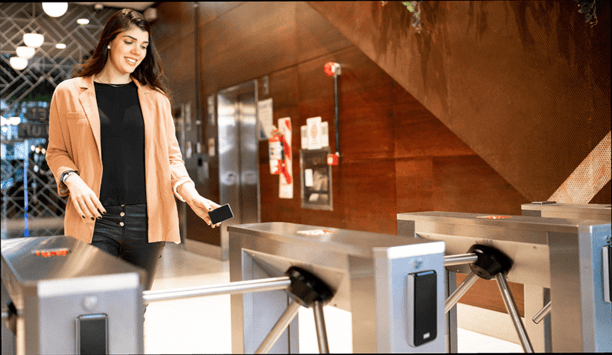
The truth behind 9 mobile access myths
Download
Access control system planning phase 2
Download